Currently there are no direct flights to Santiago from San Francisco. Since we were flying via United, our best options were flights with a layover in Houston with Continental Airlines or a layover in Toronto with Air Canada. We ended up choosing Air Canada for a couple reasons: 1. I was able to book flights using 1/2 the normal amount of points (55,000 instead of 110,000 for business first class) on a date that worked for both of us (March 12). 2. Air Canada’s 2-class 777 was decent enough. I know this is going to sound snobby, but I conduct extensive research on aircraft and international flights prior to flying to ensure the most comfortable experience. I read nothing pleasing about Air Canada’s 3-class 777 and I confirmed with the airline that we were flying the 2-class 777. =D
We arrived at SFO around 9:40am for our 11:45am departure. After printing our boarding passes and going through security, we sat ourselves down in the Air France KLM Lounge by around 10am (thanks TSA pre-check!). Breakfast time!
Coffee, tea, orange juice, snacks, and pain au chocolat in the business class lounge: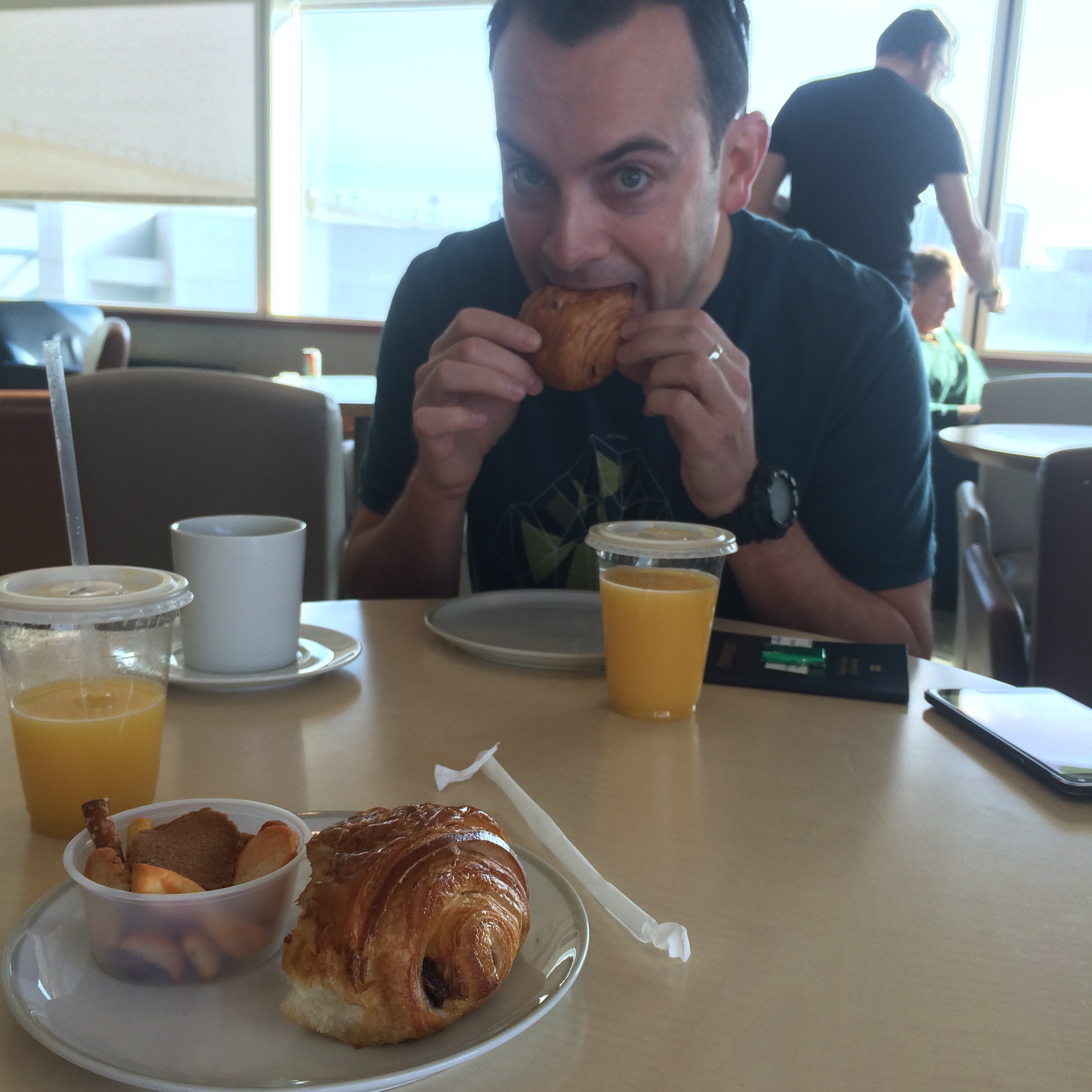
We made sure not to eat too much–knowledge gained from flying a number of international first class flights last year. Long, first class flights are a feast and we had not one but TWO international flights to Santiago!
Upon being seated in the first leg from San Francisco to Toronto (~4.5 hours), we were immediately handed menus for lunch.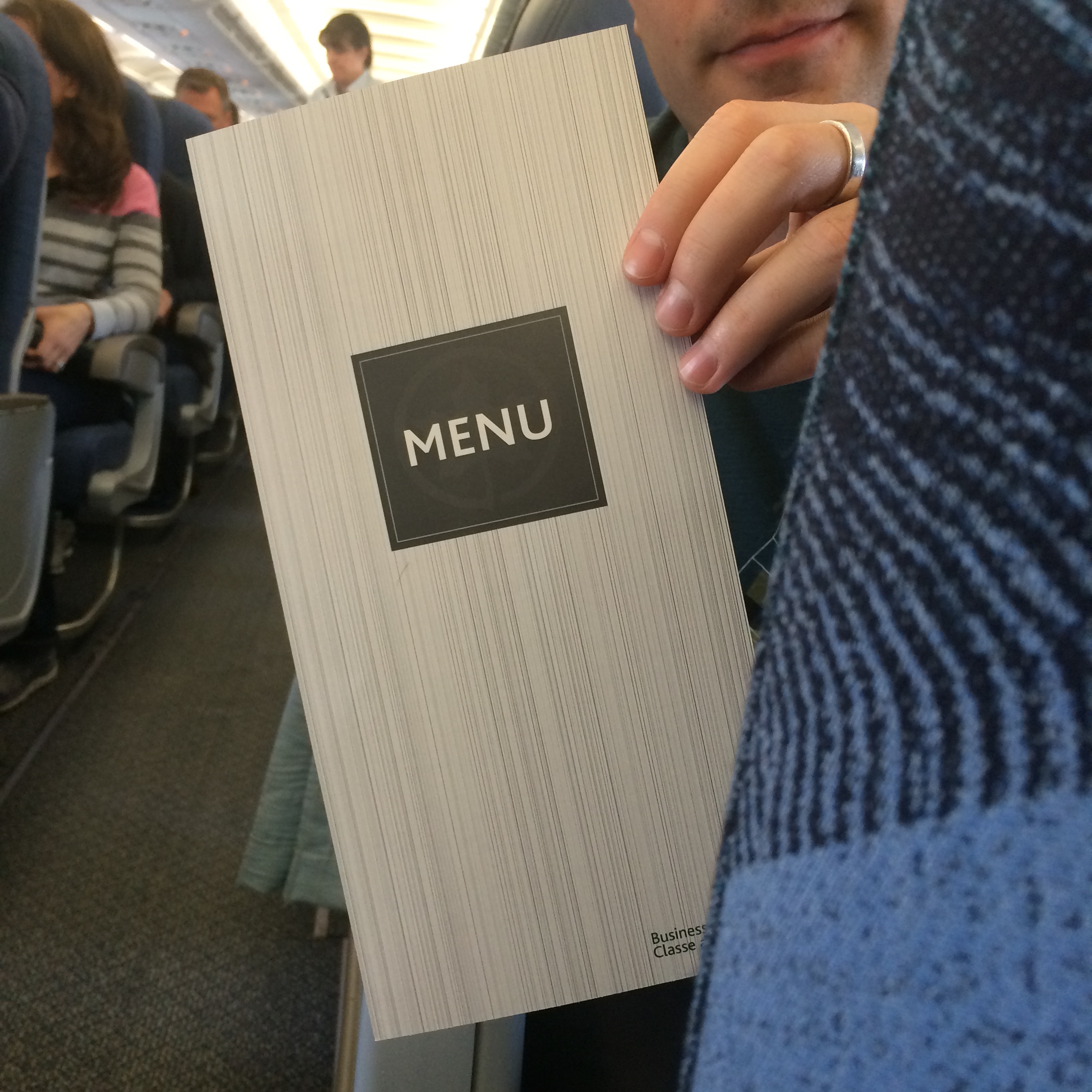
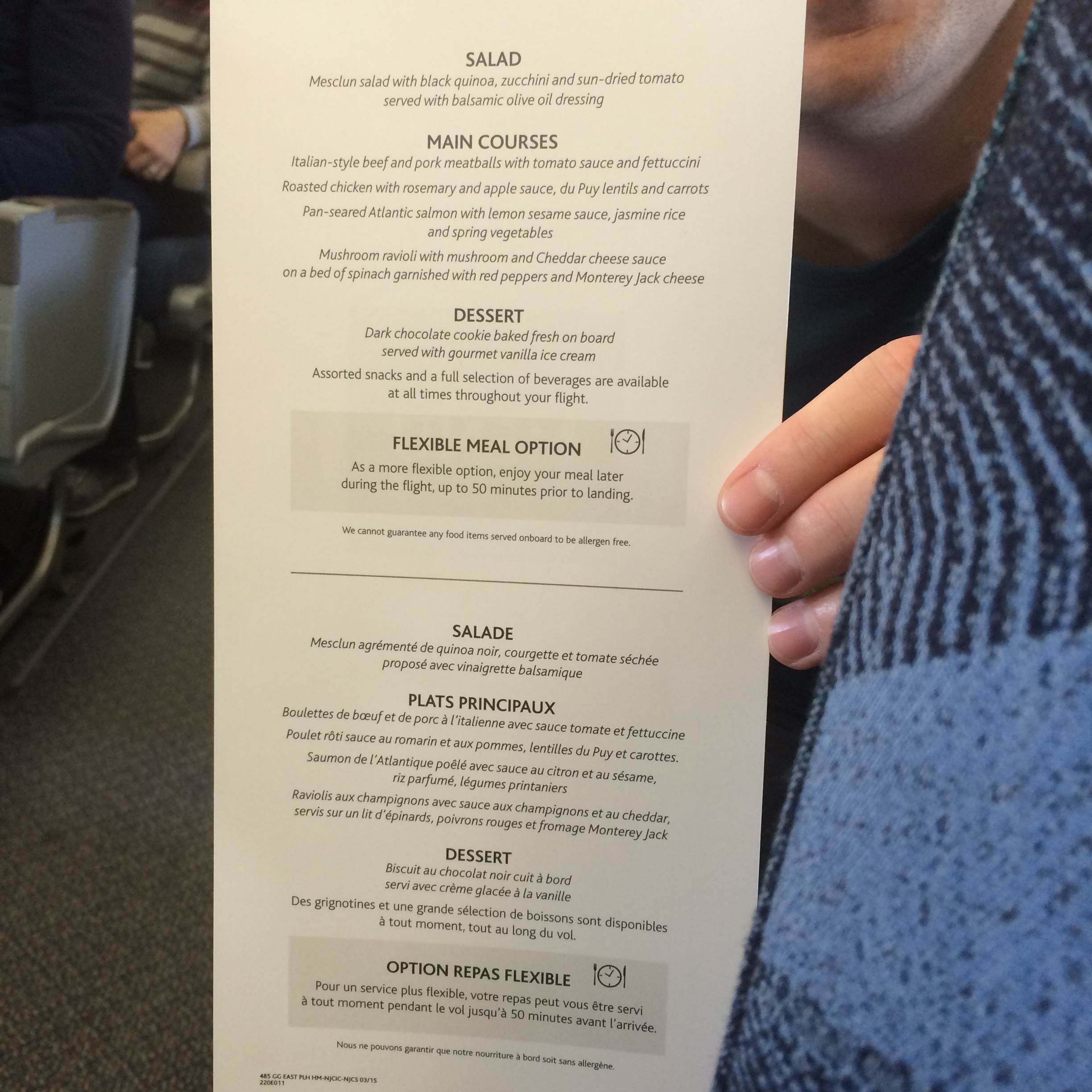
Wine and warm nuts shortly after takeoff, accompanied by Totoro and research on Torres del Paine. There was no nut rage on this flight. =D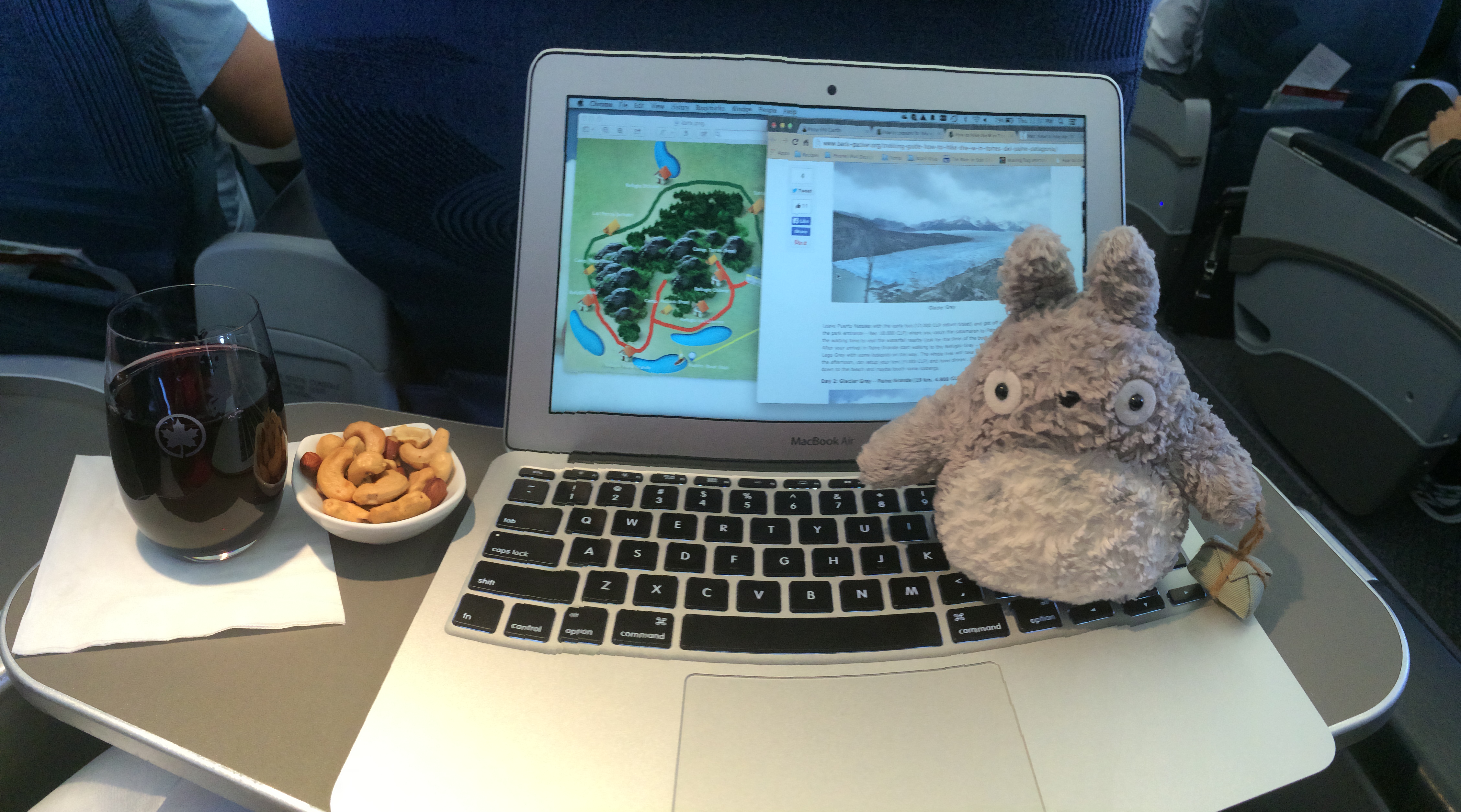
Appetizer of bread and quinoa salad: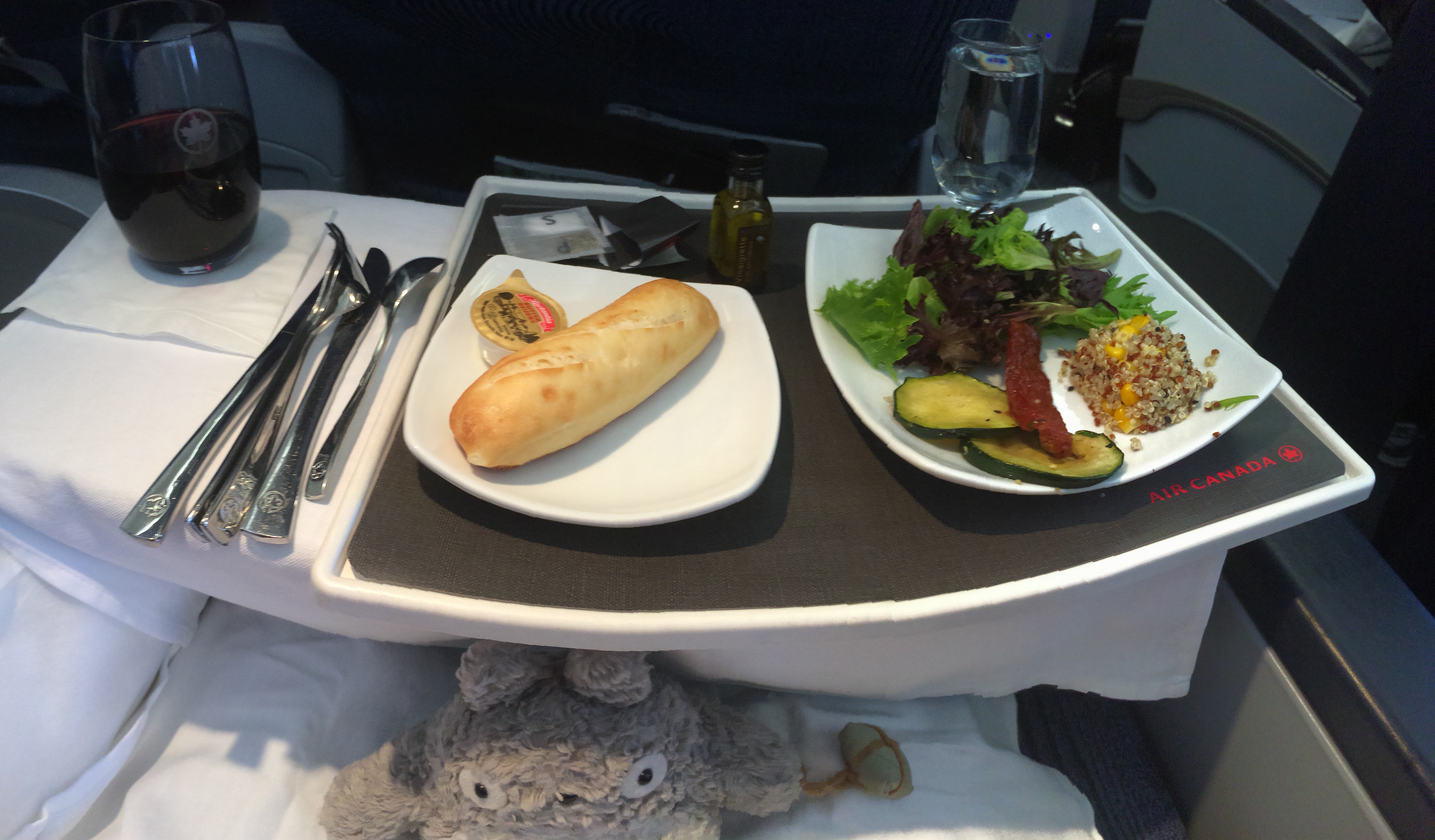
I selected the mushroom ravioli as my main course: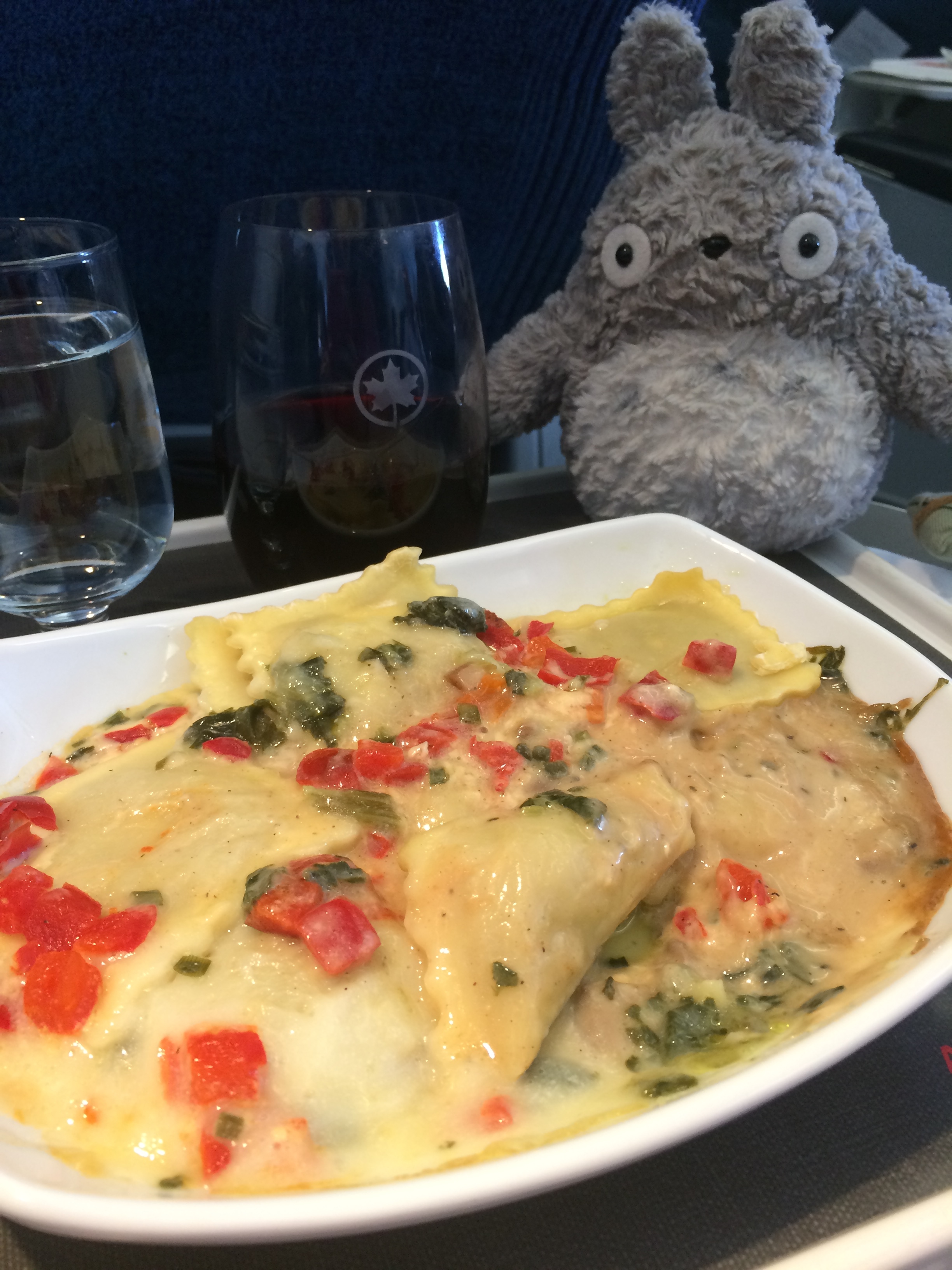
And dessert was a cookie and vanilla ice cream: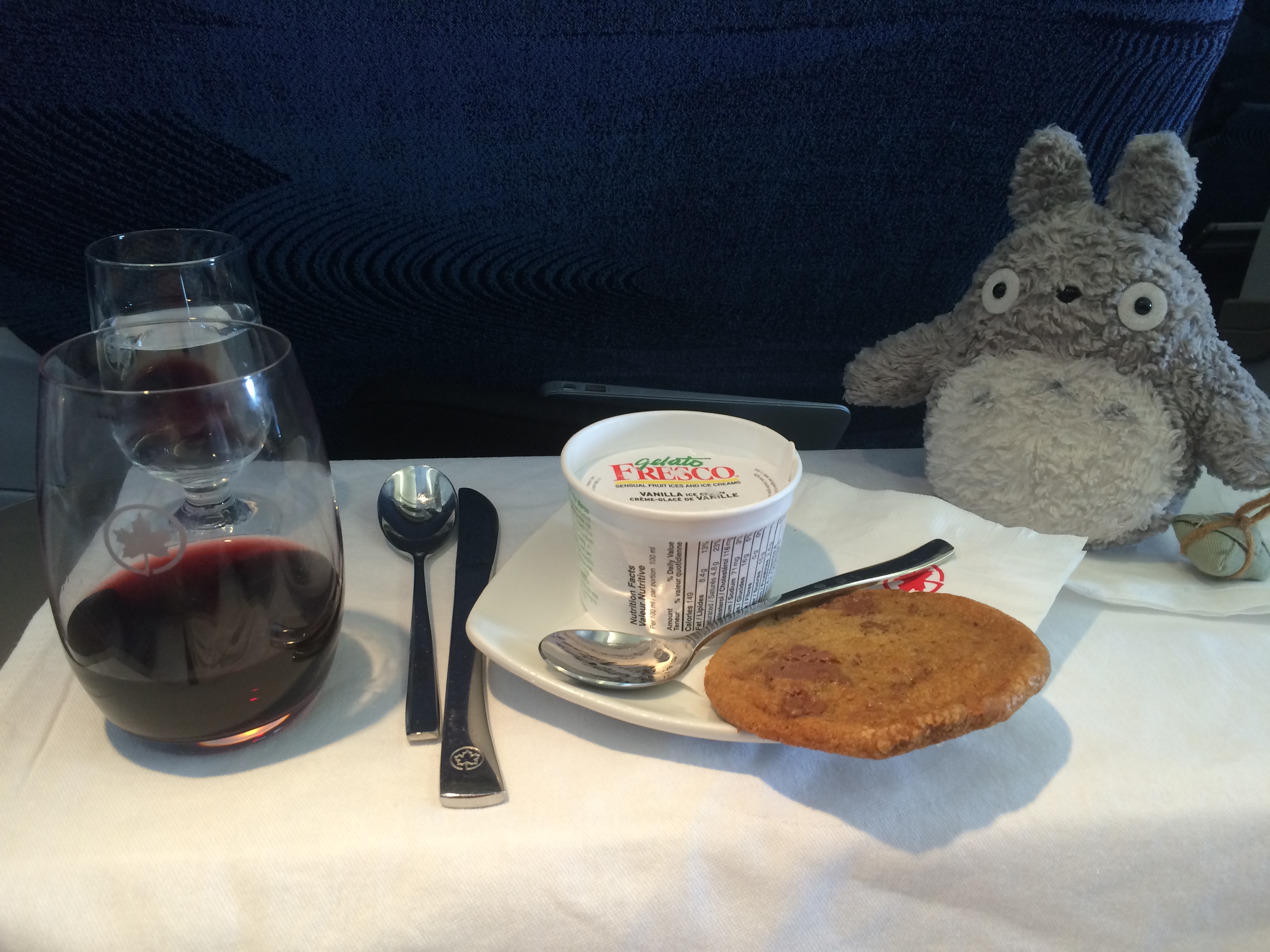
Honestly, the food wasn’t great. It was okay. It’s a meal on a plane, what can you expect? At least the flight attendant passed around free Lindt chocolate bars.
Our layover in Toronto was a bit long (4 hours) but the Maple Leaf Lounge was large and accommodating. There was a complimentary bar and buffet.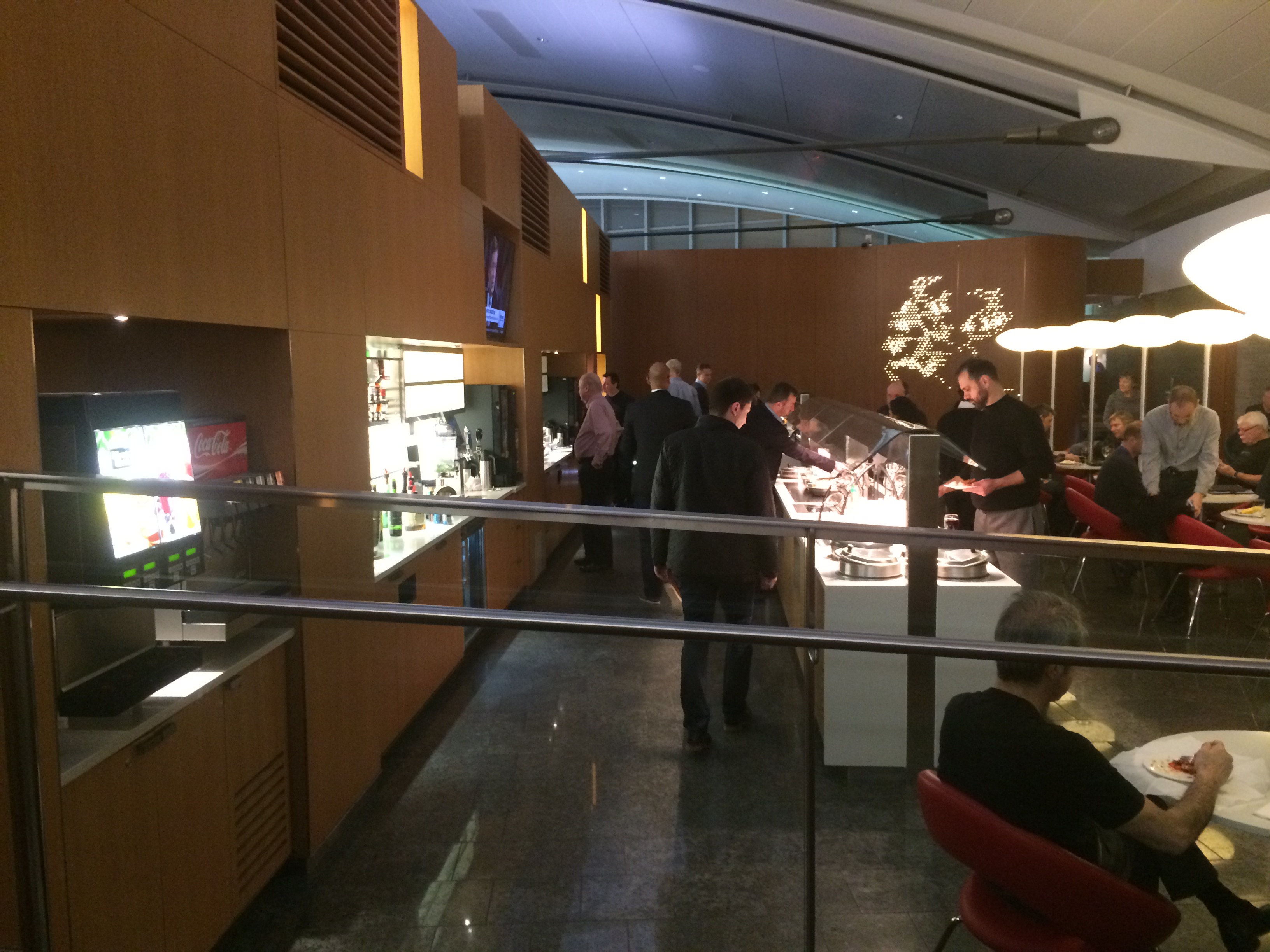
I regrettably overstuffed myself with salad, pasta, hummus, and cupcakes. Lots of cupcakes. I also had what they called “Vietnamese pho” but it was nothing close to it. They tried, though.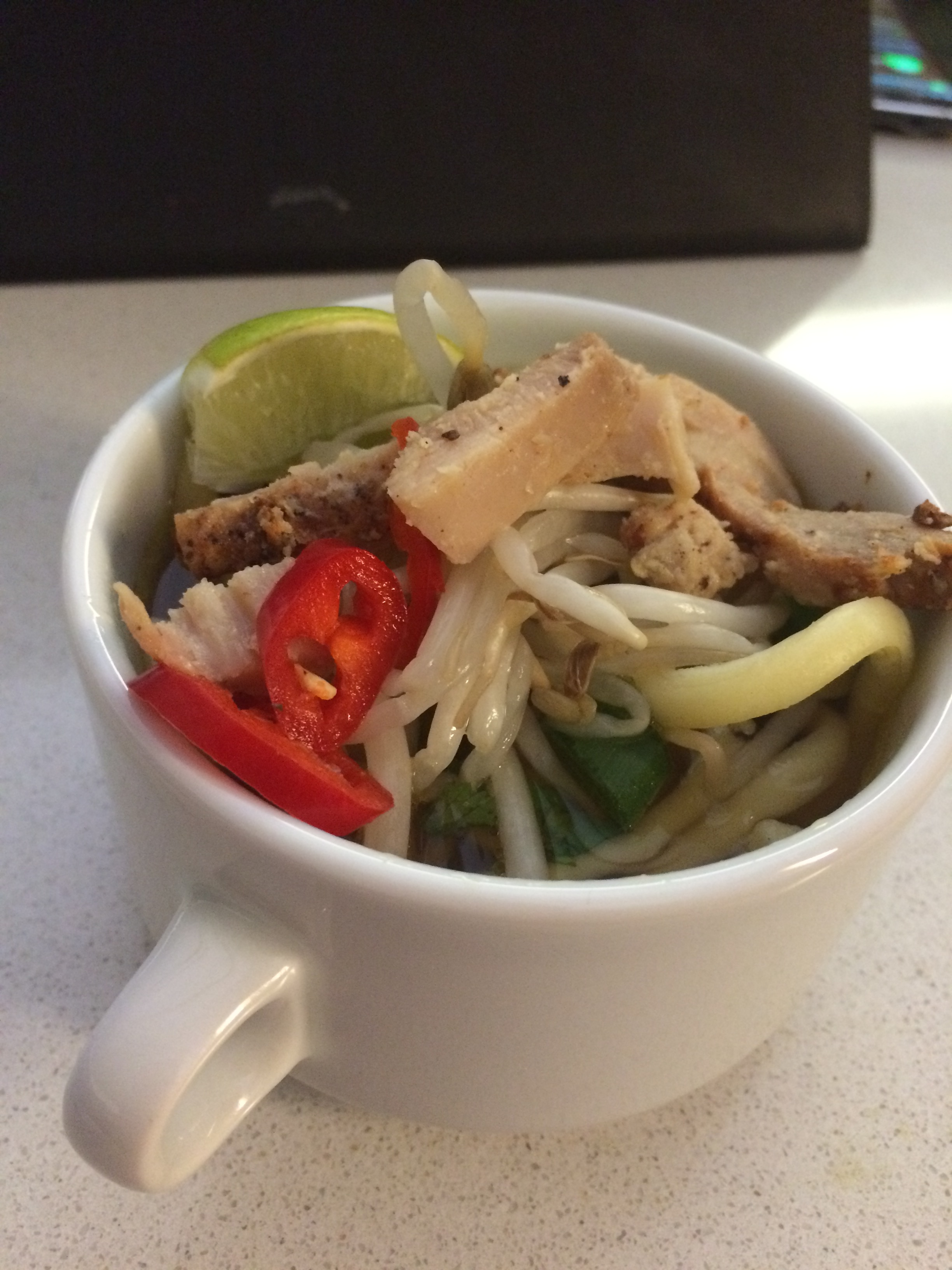
Little did we know that our next international flight had TWO meals: dinner at 1:30am and breakfast 90 minutes before arrival. More food AGAIN?! OKAY!!! Chris asked for wine at midnight. Heehee.
Here we are pondering over what to eat (again):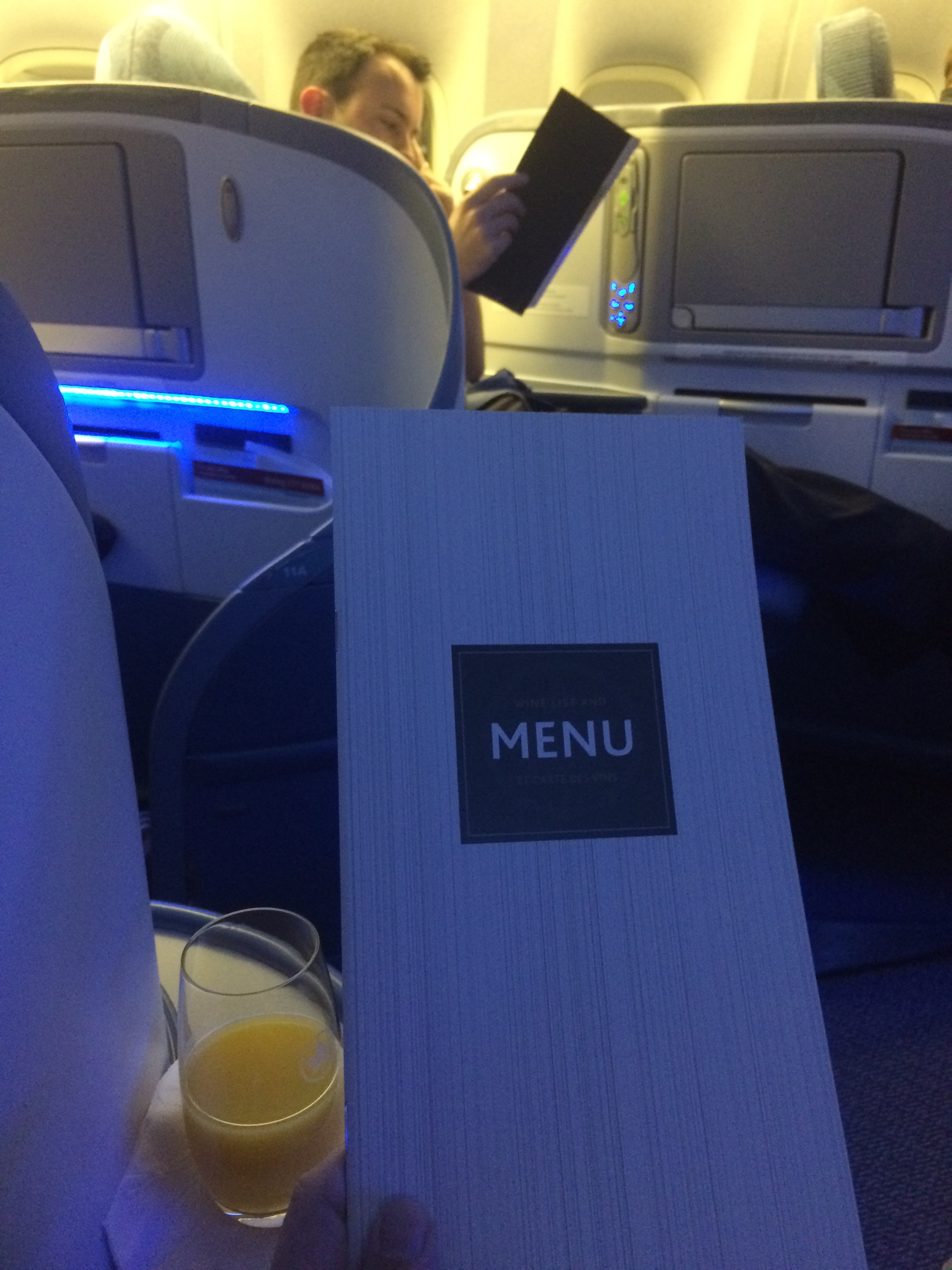
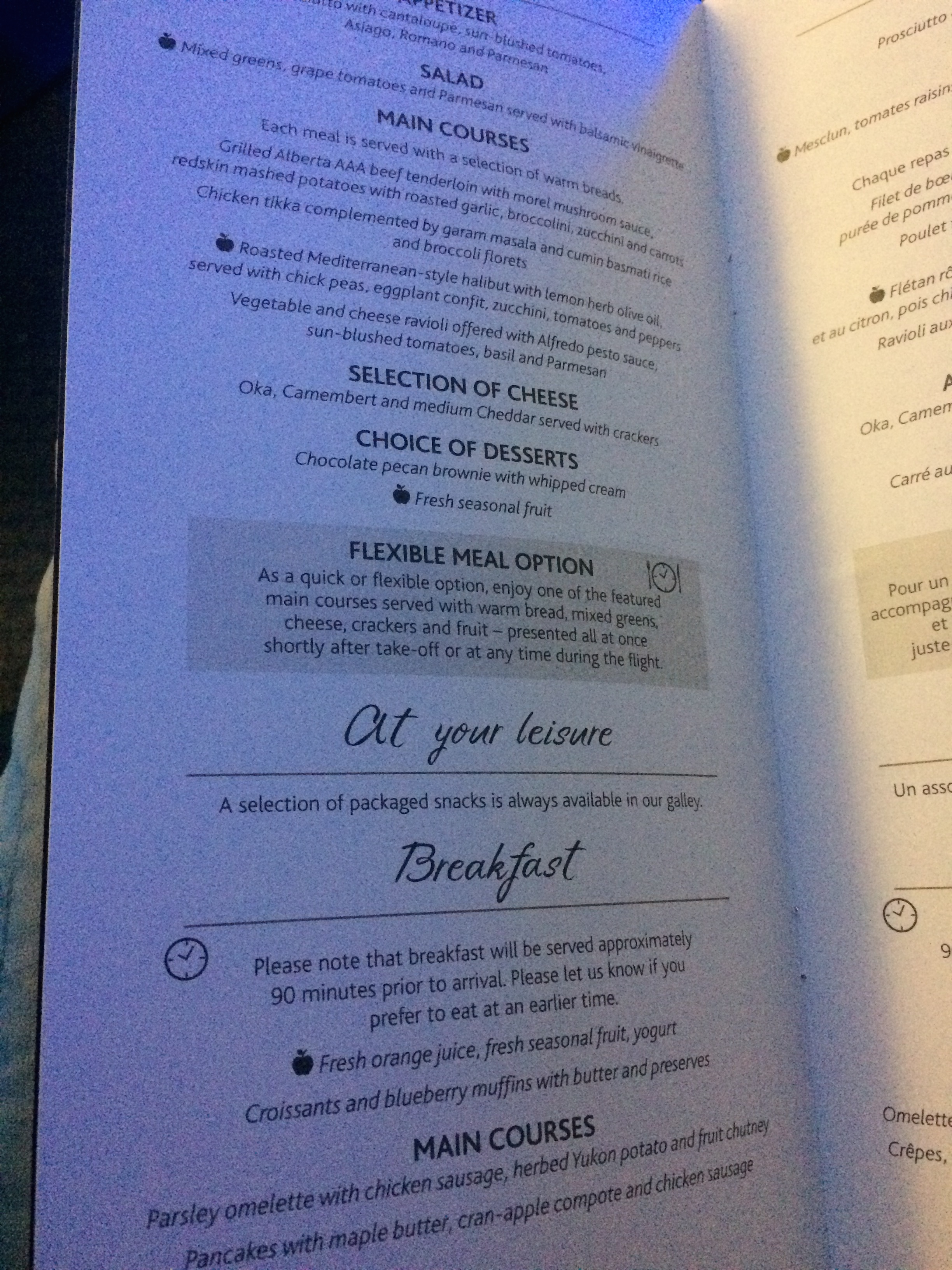
Appetizer of prosciutto and melon with bread and salad: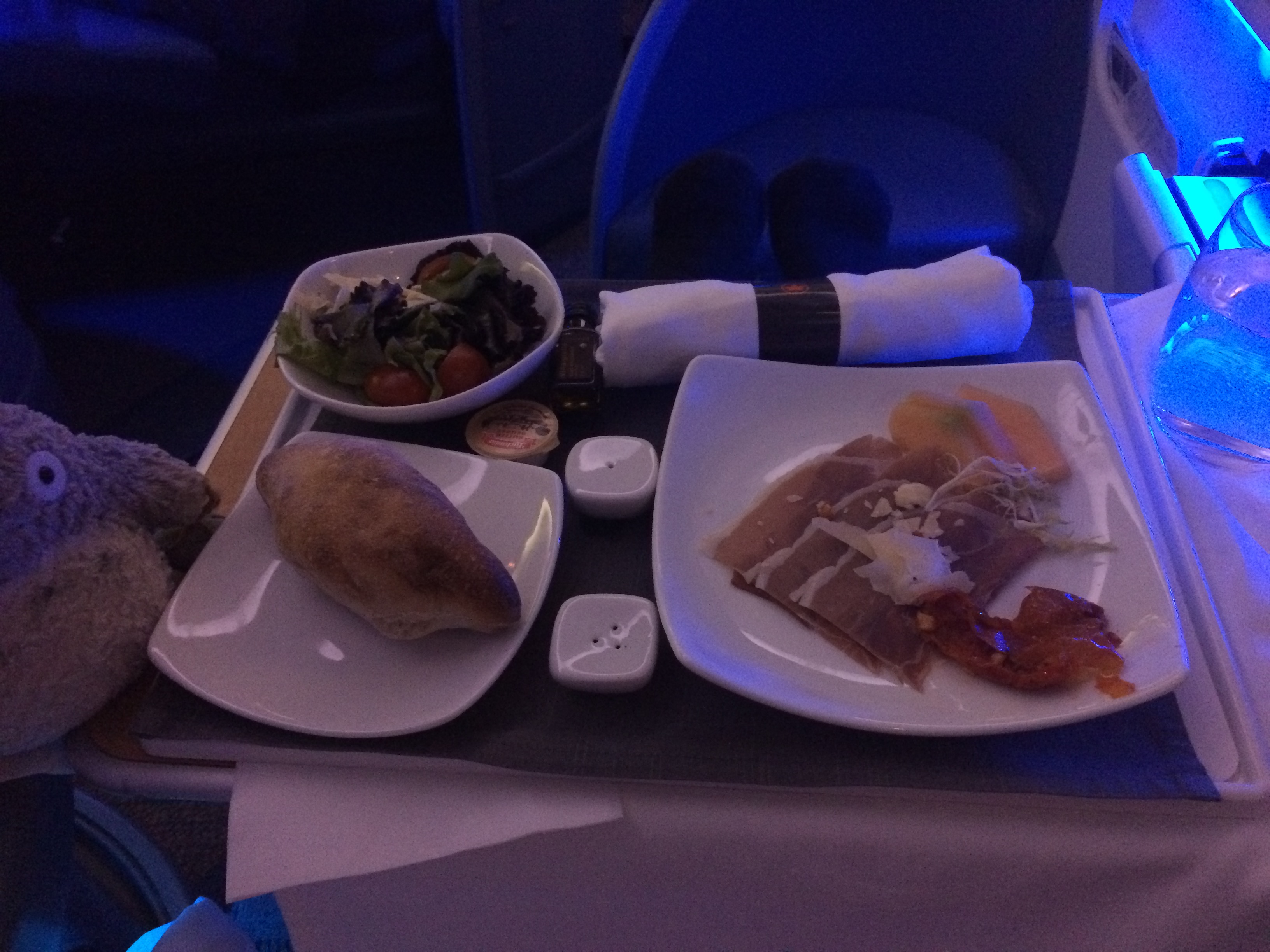
Dinner of steak and potatoes. The steak was as awful as it looks, but Chris devoured his. I think he devoured it because he was so absorbed in his movie, he didn’t notice how terrible it was. I mean, just look at him.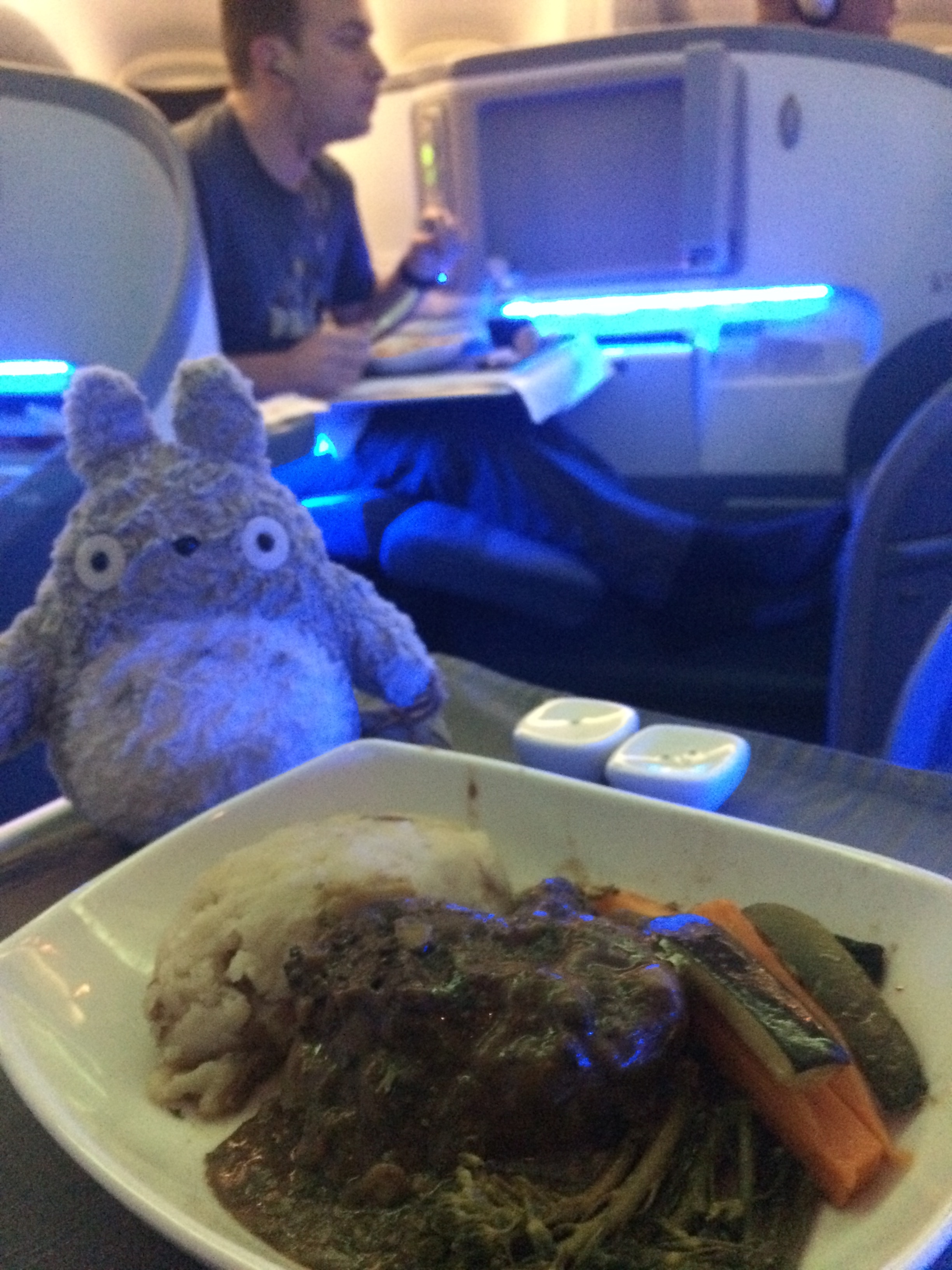
Warm brownie with whipped cream. Oh yeah.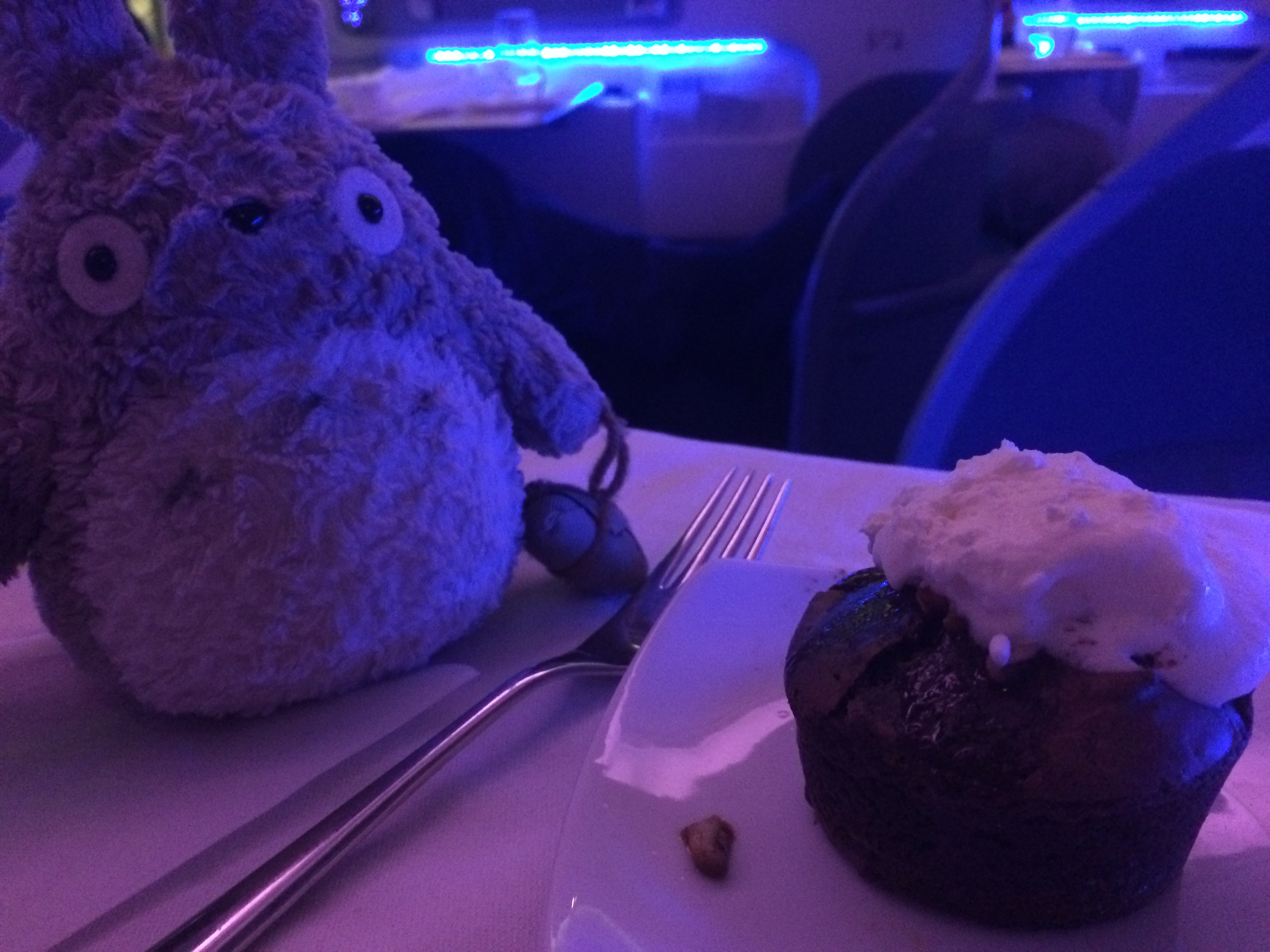
Stretching our legs in our spacious international business first class seats wasn’t so bad.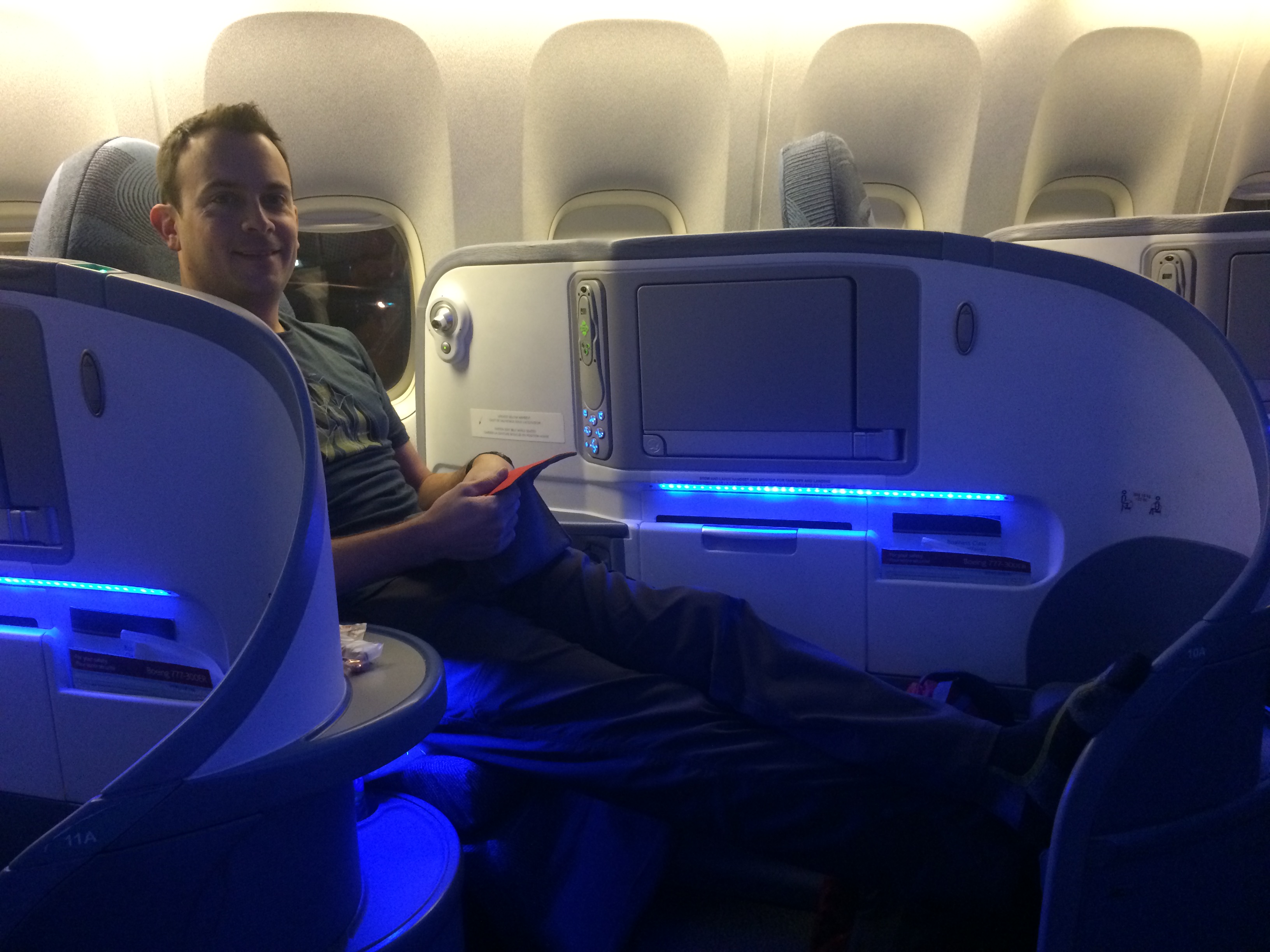
The complimentary swag bag was okay. We’ve had better. =P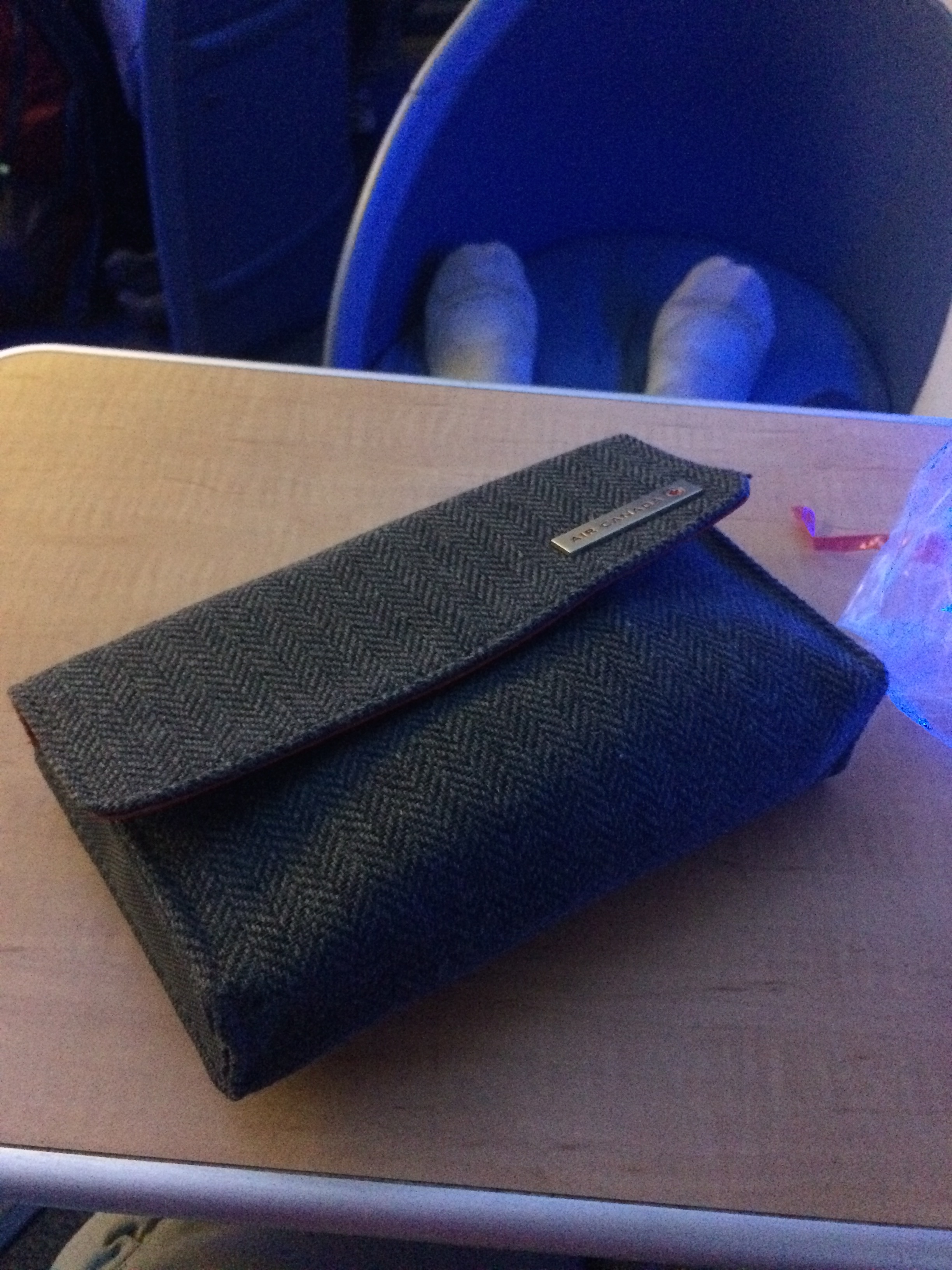
Inside the swag bag were socks, an eye mask, lip balm, lotion, earplugs, a mint, and toothbrush/toothpaste. No pen, though. Where the hell is my pen?!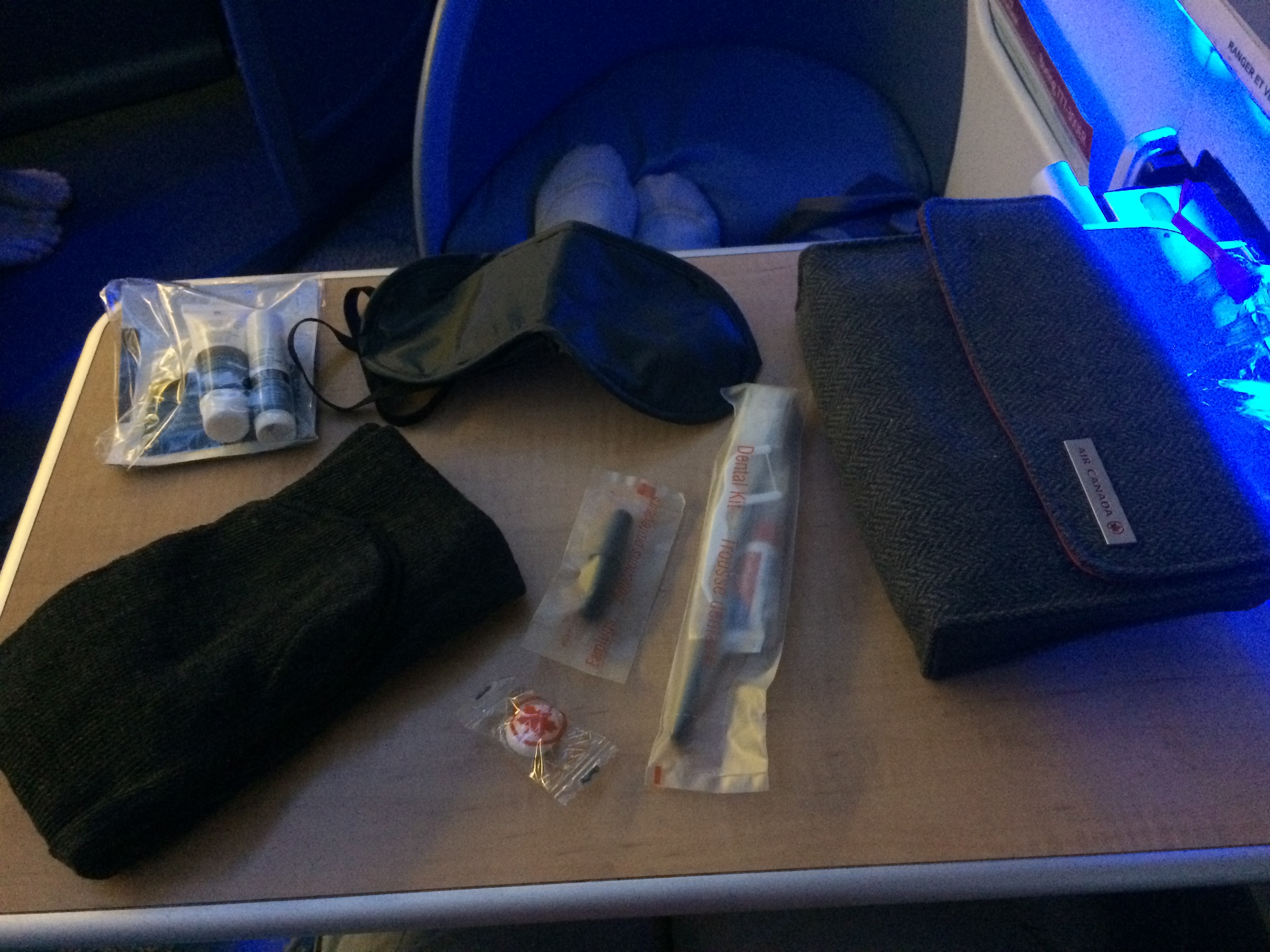
After the brownie I literally passed TFO. I only woke up again because I heard the flight attendant serving breakfast. It was nice to have 6-7 hours pass by so quickly.
I hate omelettes (especially airline omelettes) so I opted for the pancakes and Canadian maple syrup. Yummy!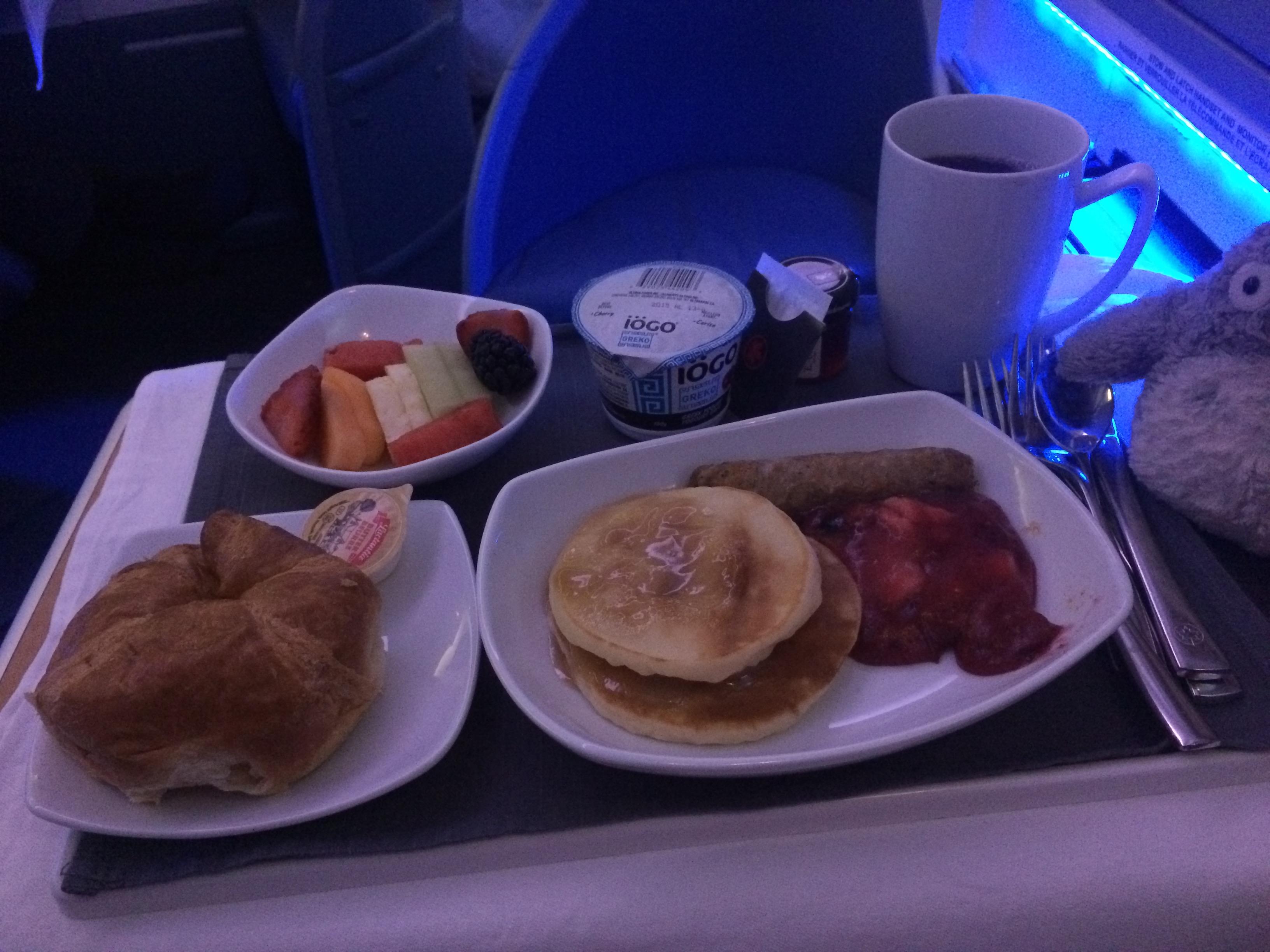
The plane landed around 11am Friday the 13th and the weather was FUCKING INCREDIBLE. It was like Northern California in September–warm and dry with a cool breeze, and amazingly pleasant in the shade. And to top it off…I inserted my travel debit card in the ATM and realized I forgot my PIN. DOH!
Accommodation for our first two nights in Santiago was an apartment with a couple of dudes we found on AirBnB for $25/night. Directions to the apartment via local bus and metro were simple enough. After all, Santiago’s metro is considered the most extensive metro in all of South America.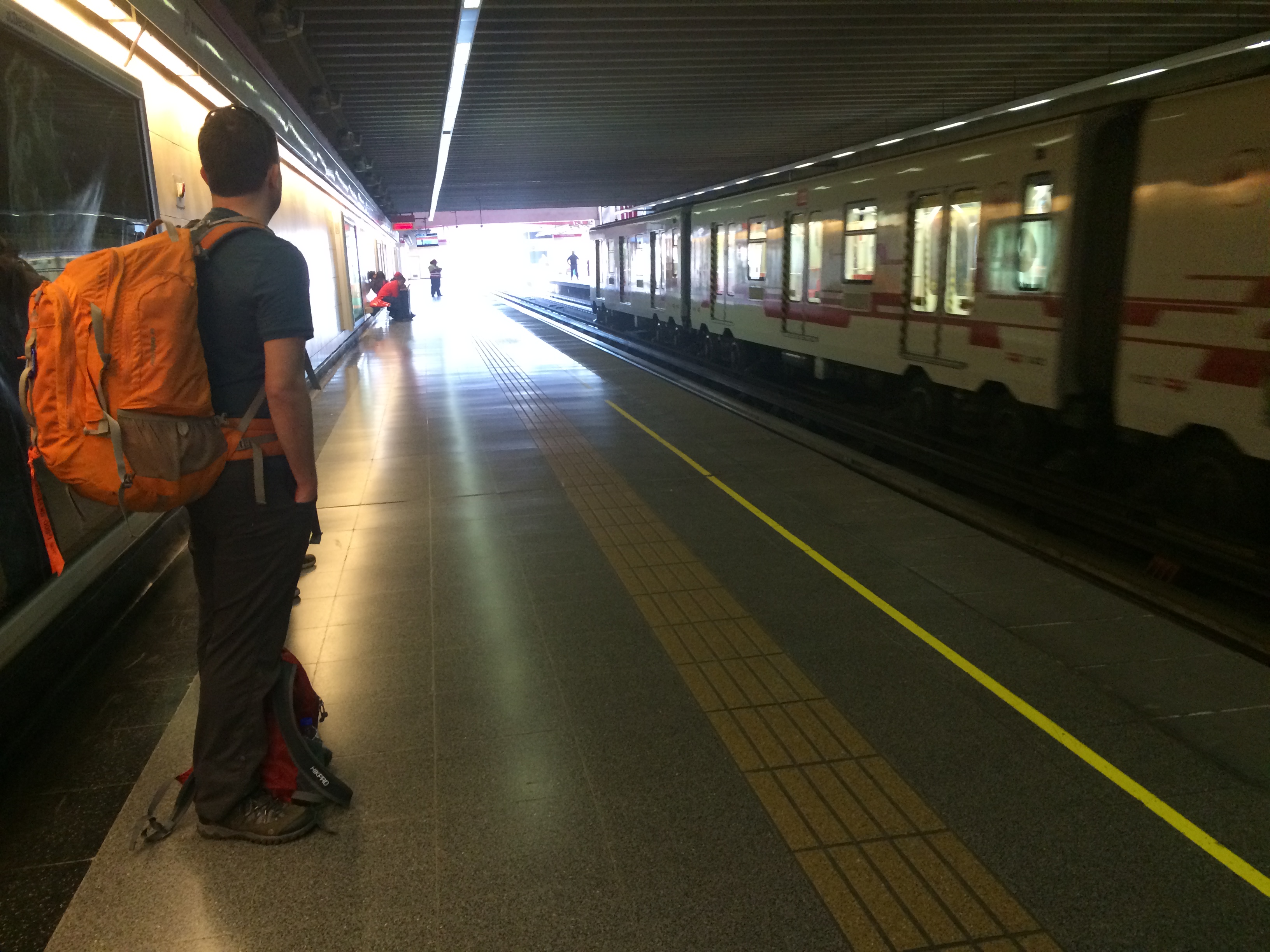
After dropping off our luggage, we set out to explore downtown Santiago. The metro was super easy to use, clean, reliable, and cheap (~$1 USD pp, depending on what time you ride), but hot (no AC!).
Strolling through the pleasant Bellas Artes neighborhood on a Friday afternoon: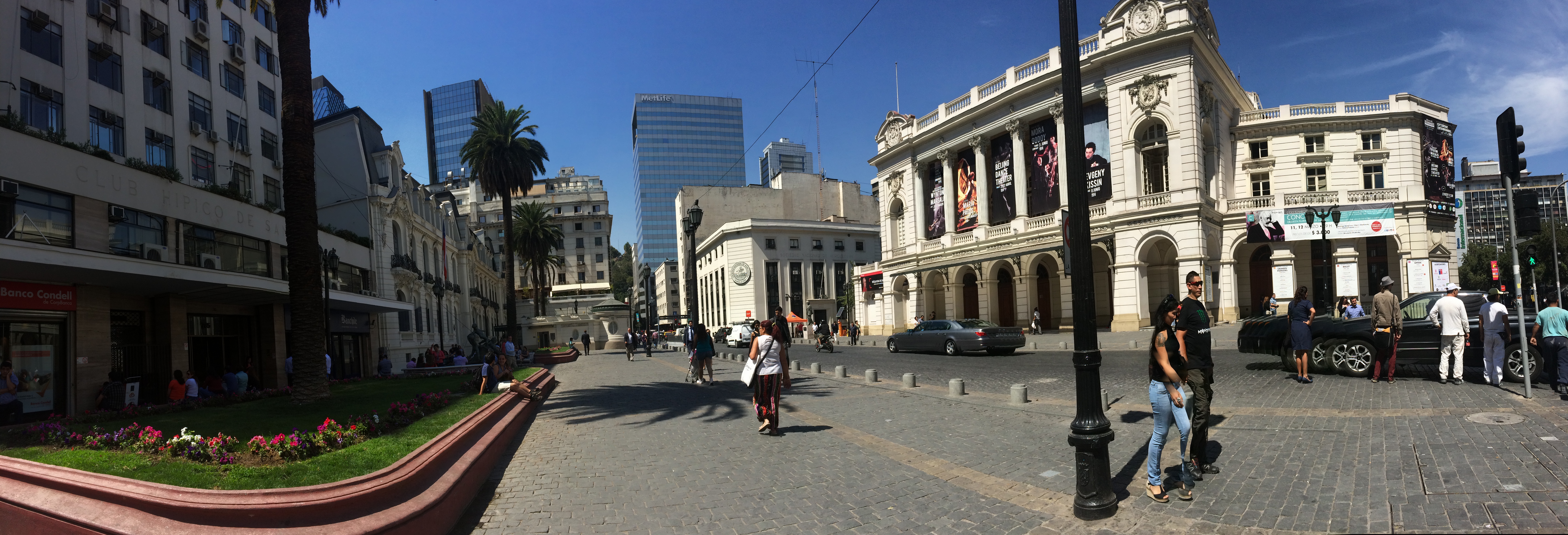
We stumbled upon the Santa Lucia Hill, walked up to the top, and saw this view of Santiago. The Andes is to the east (left center of the photo), but the smog kept it hidden. Pretty damn big city of ~7 million people!
I heard a lot about the completos, or hotdogs. These hotdogs were served with a generous amount of mayo (gross!), avocado puree, and tomatoes. It was interesting to say the least.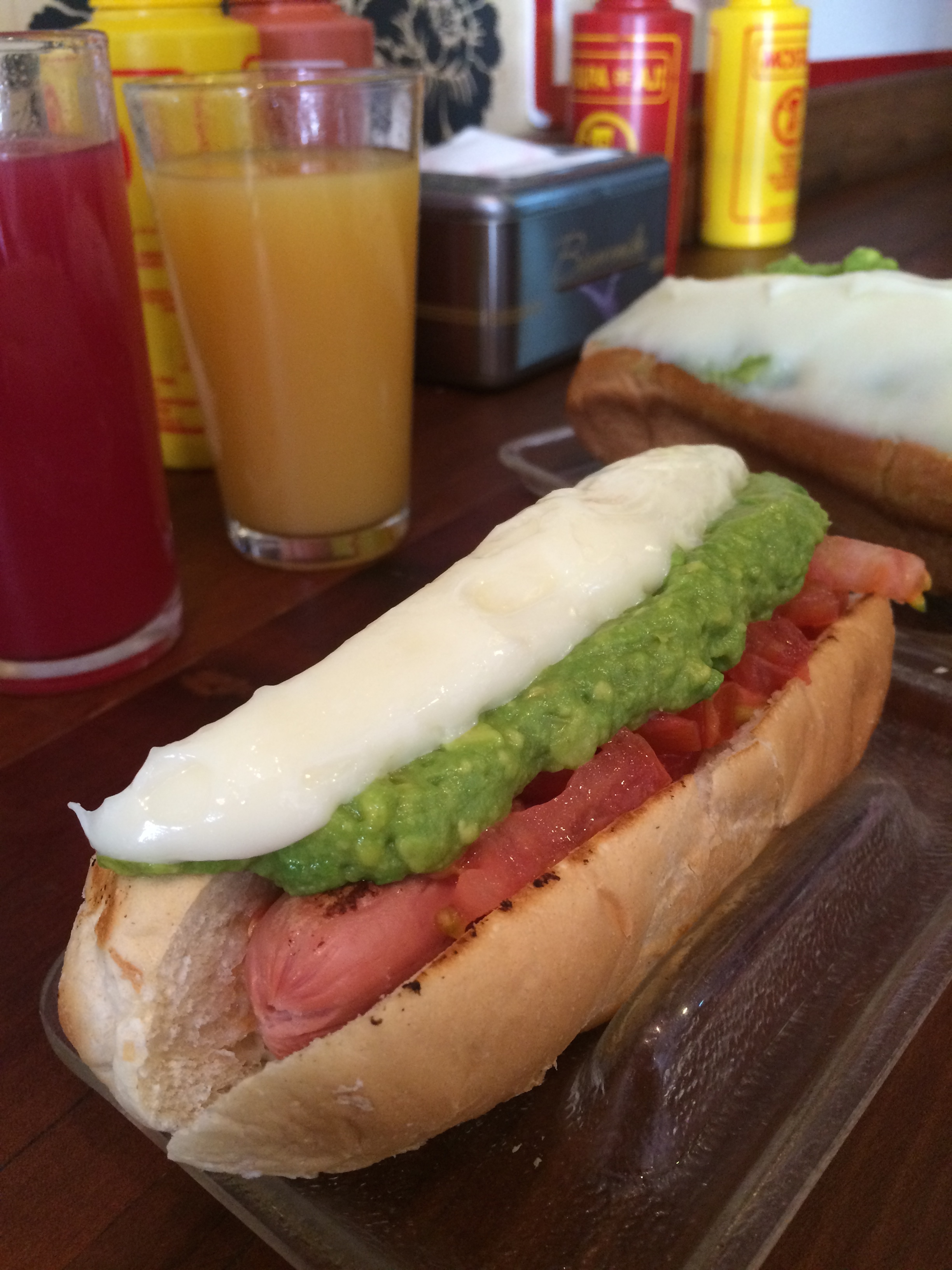
Jet lag between Chile and California wasn’t so bad (4 hours), but our lack of sleep from the flight caught on and our minds slowly scampered off into a slight daze by late afternoon and we promptly returned to the apartment for a nap.
The following day was our first full day in Santiago, but definitely not our last. (We will be returning again in late April en route to Easter Island.) We returned to the historical Plaza de Armas for lunch. From left to right, the buildings below are the Santiago Metropolitan Cathedral, the post office, and a national museum.
Took a peek in the Metropolitan Cathedral: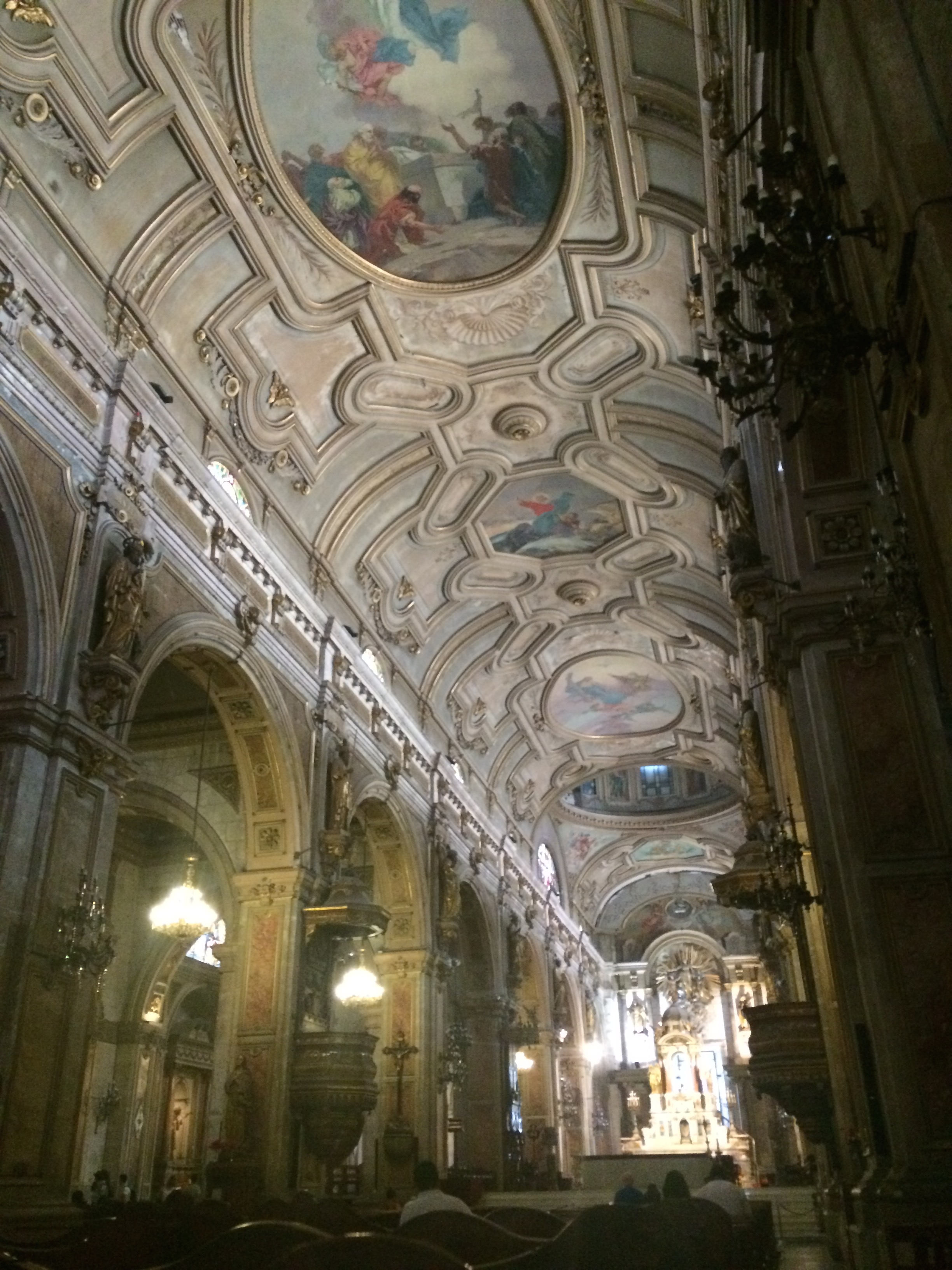
Empanadas! About $1.75 USD each. Small but packed with flavor and kept me full for hours.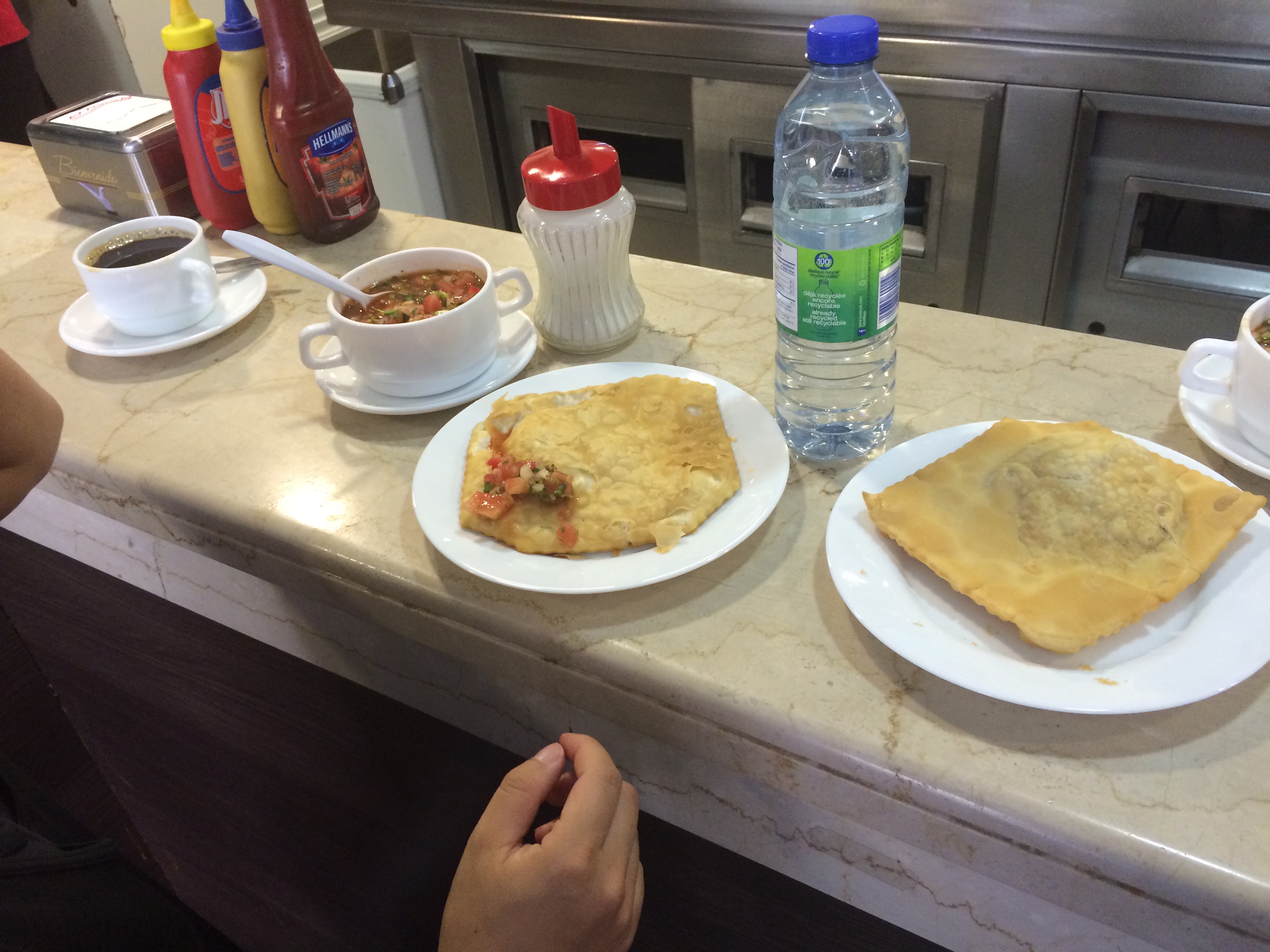
Mote con huesillos, a refreshing drink/dessert with wheat and peaches. I’d say this is the Spanish version of Vietnamese chè .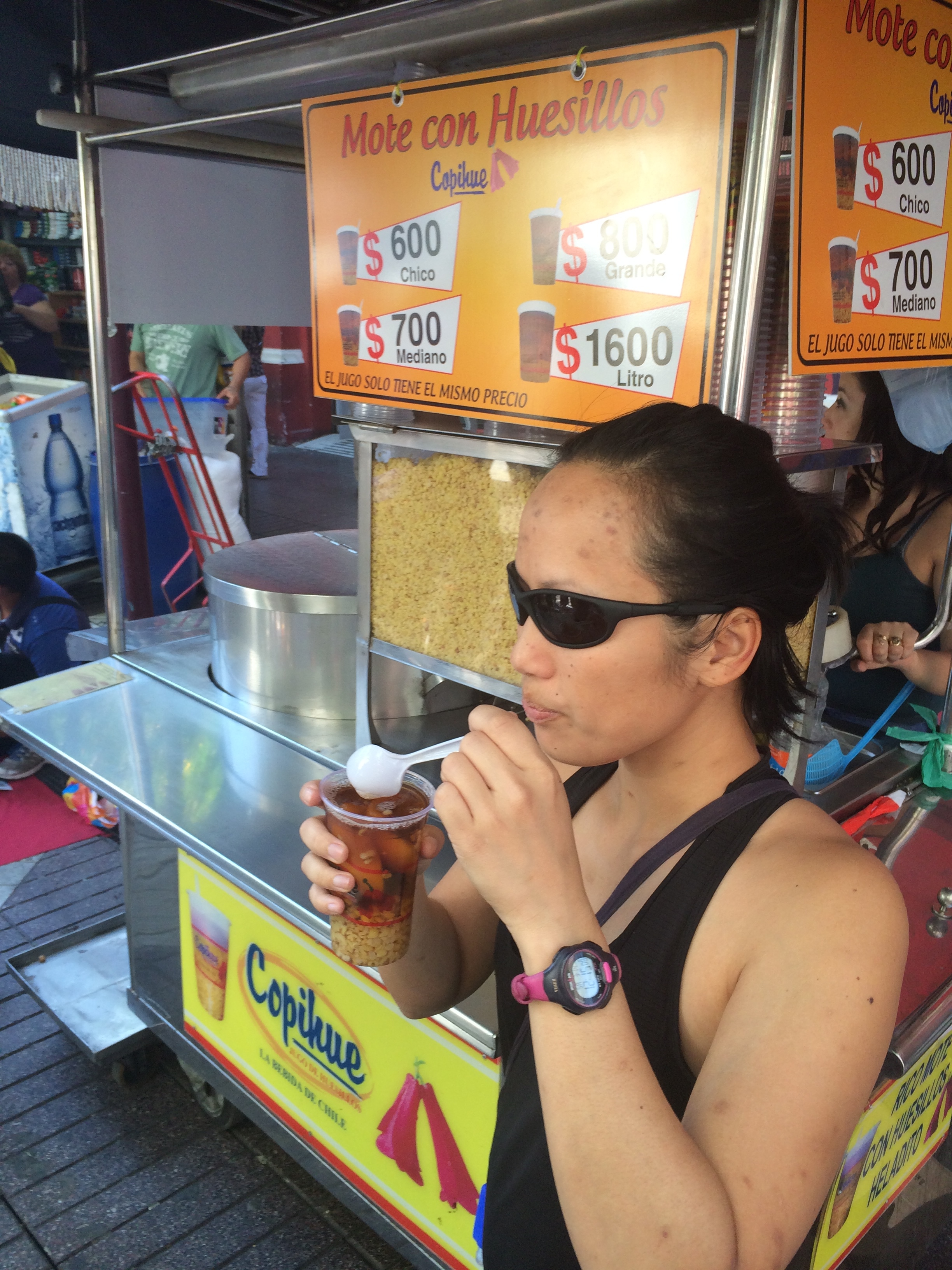
Mercado Central, apparently ranked by National Geographic the 5th largest market in the world (mostly catered to tourists):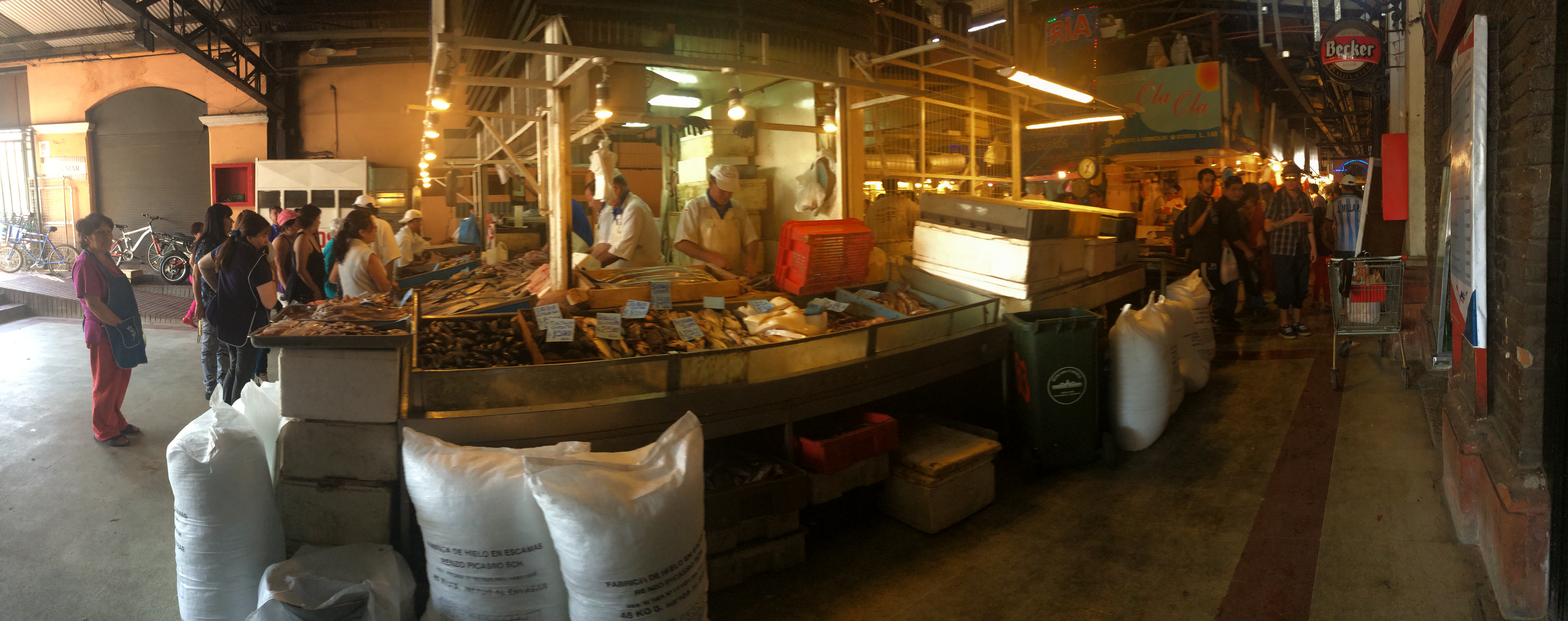
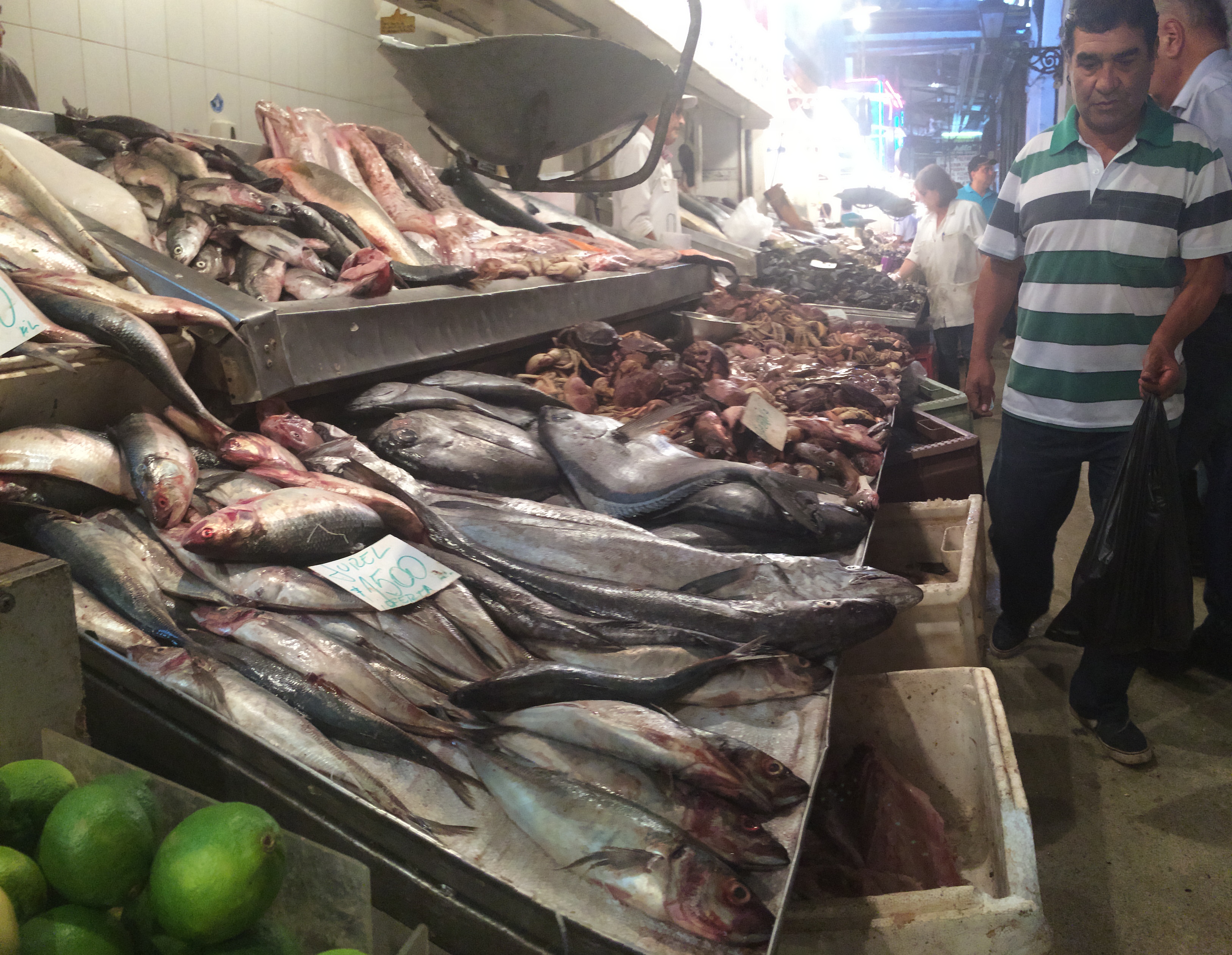
Street cart ceviche! I wasn’t hungry enough to try it, but damn, it looked yummy.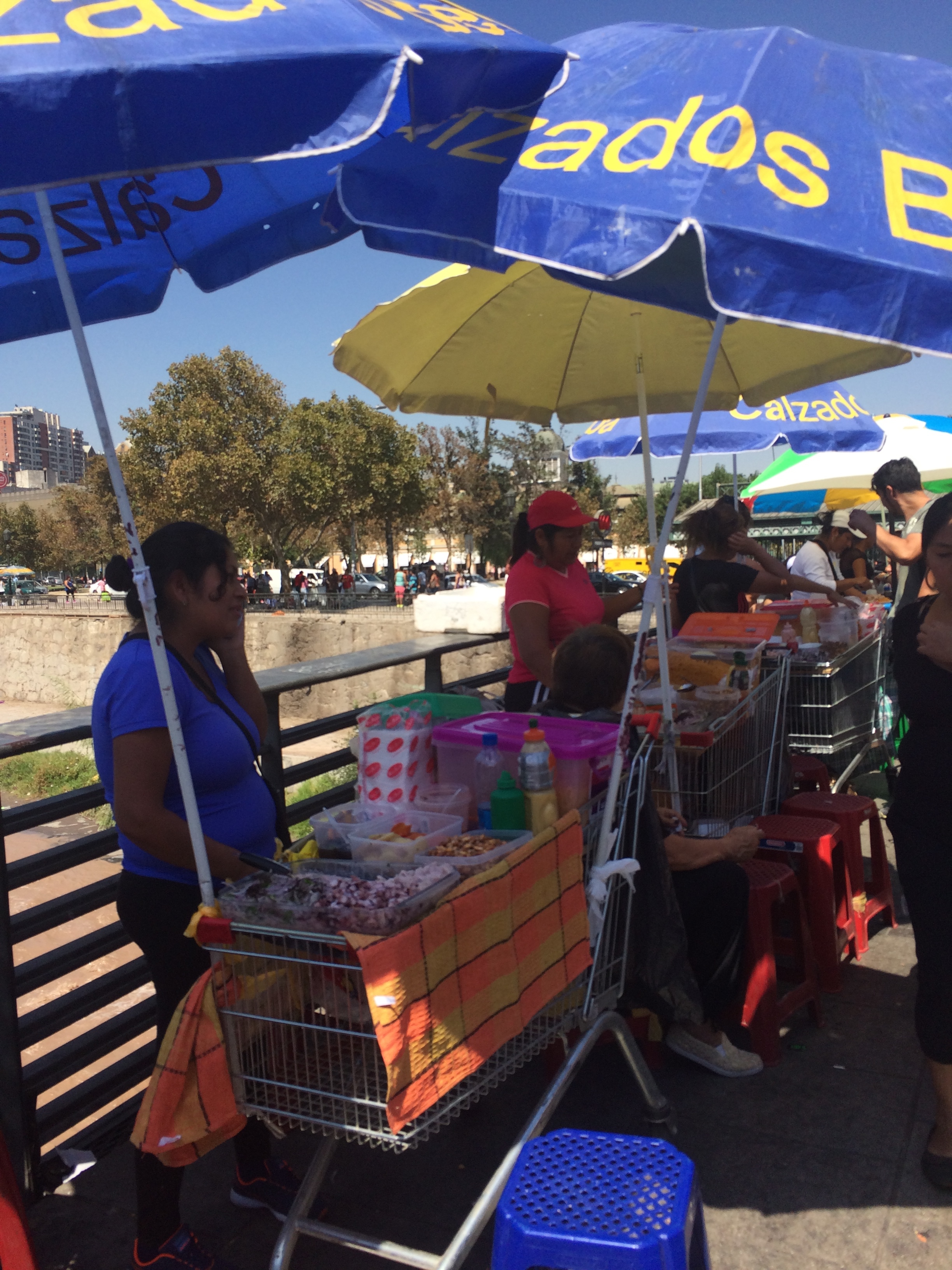
La Vega Mercado was the real deal. It was literally on the other side of the river north of Mercado Central, hustling and bustling with locals doing their shopping and eating. I read that prices at La Vega for groceries and food are a fraction of the cost of what you can find at Mercado Central.
Here is my small collection of photos from La Vega Mercado. Meow: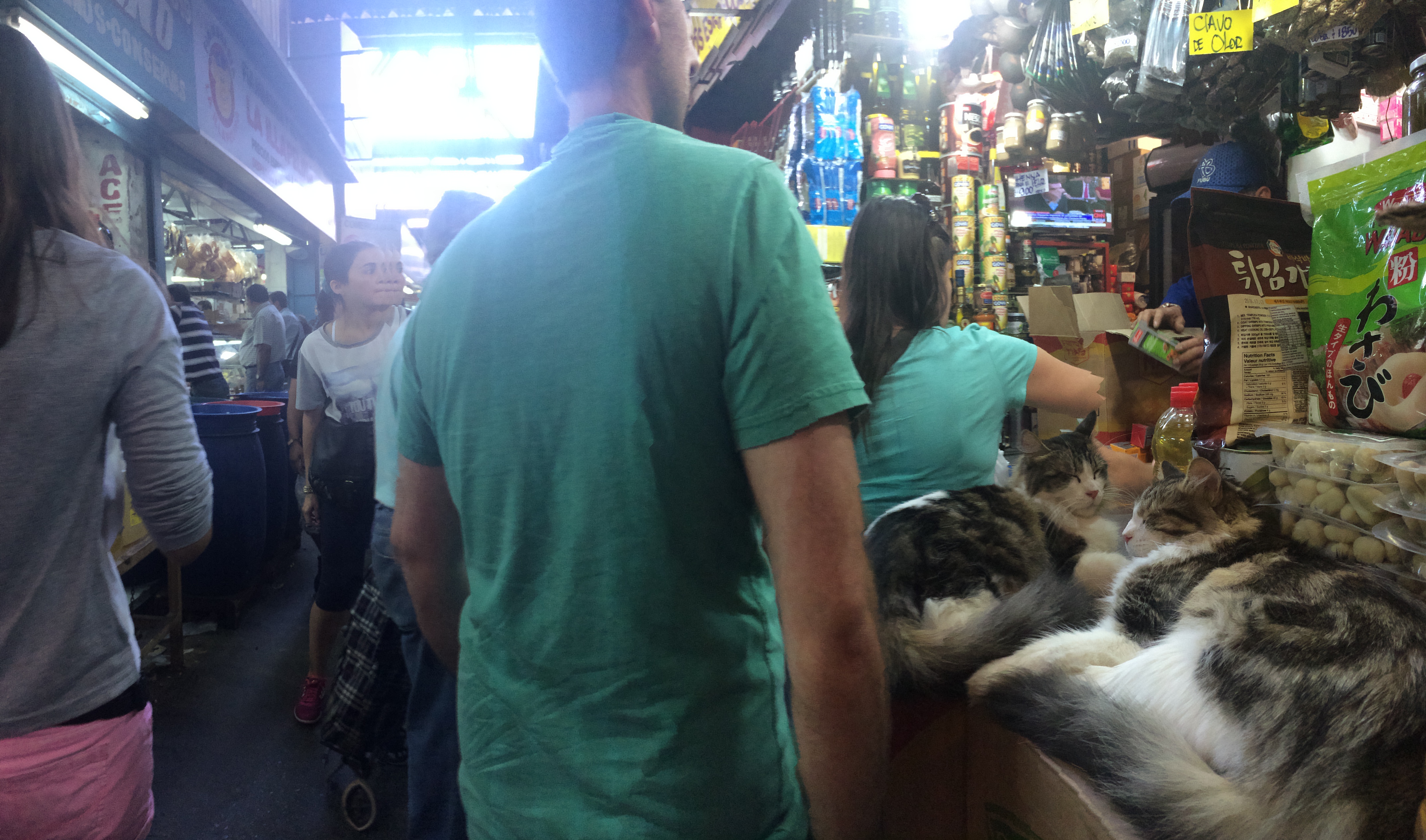
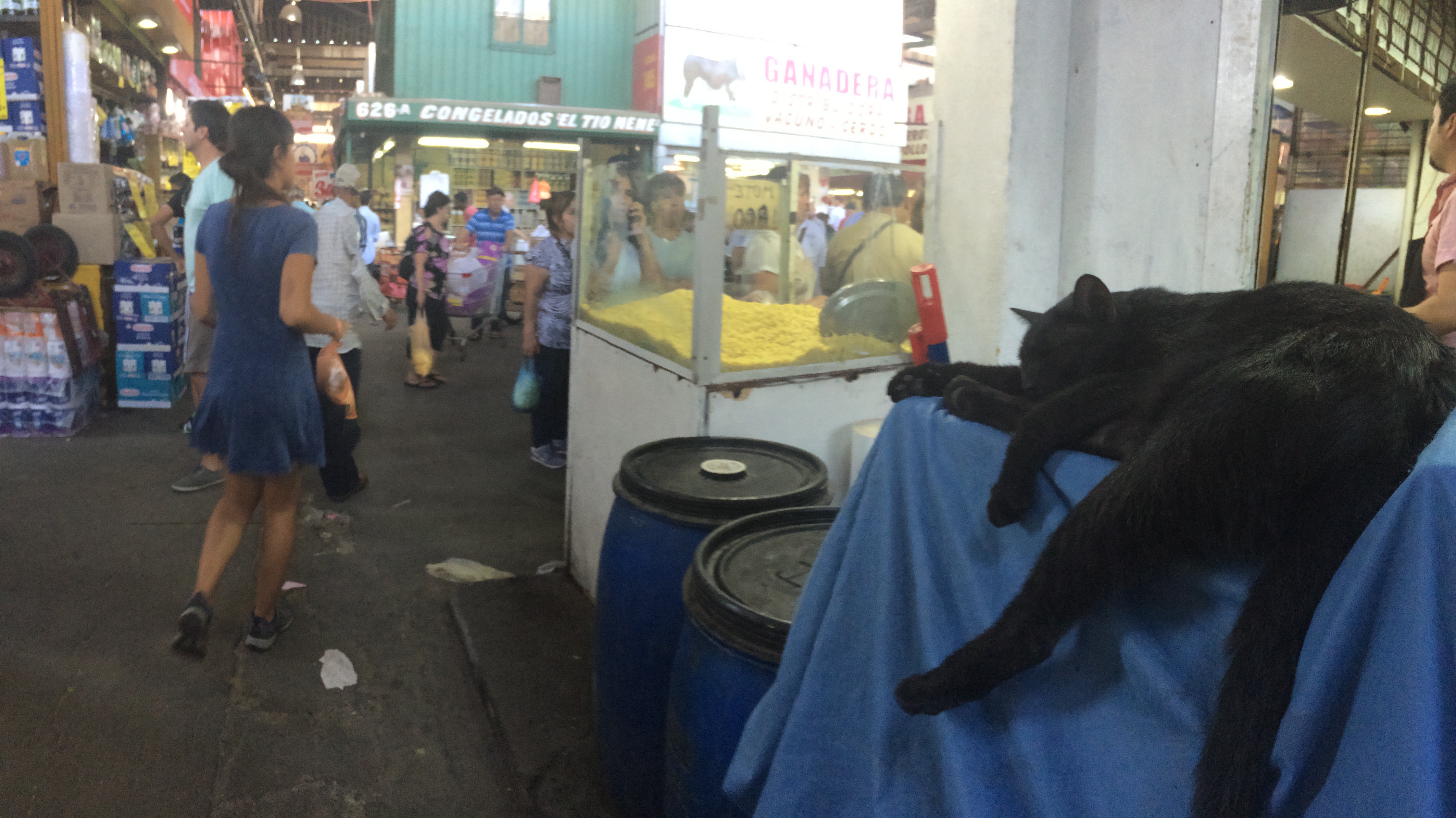
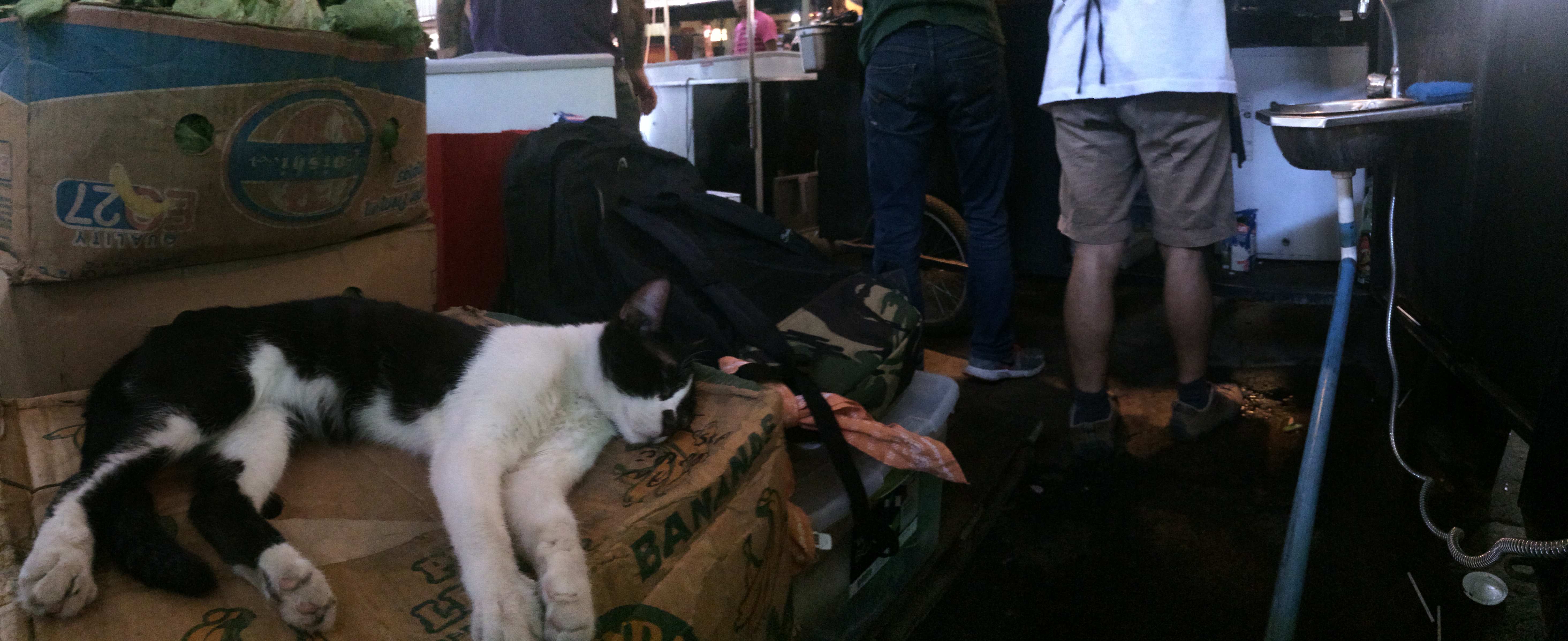
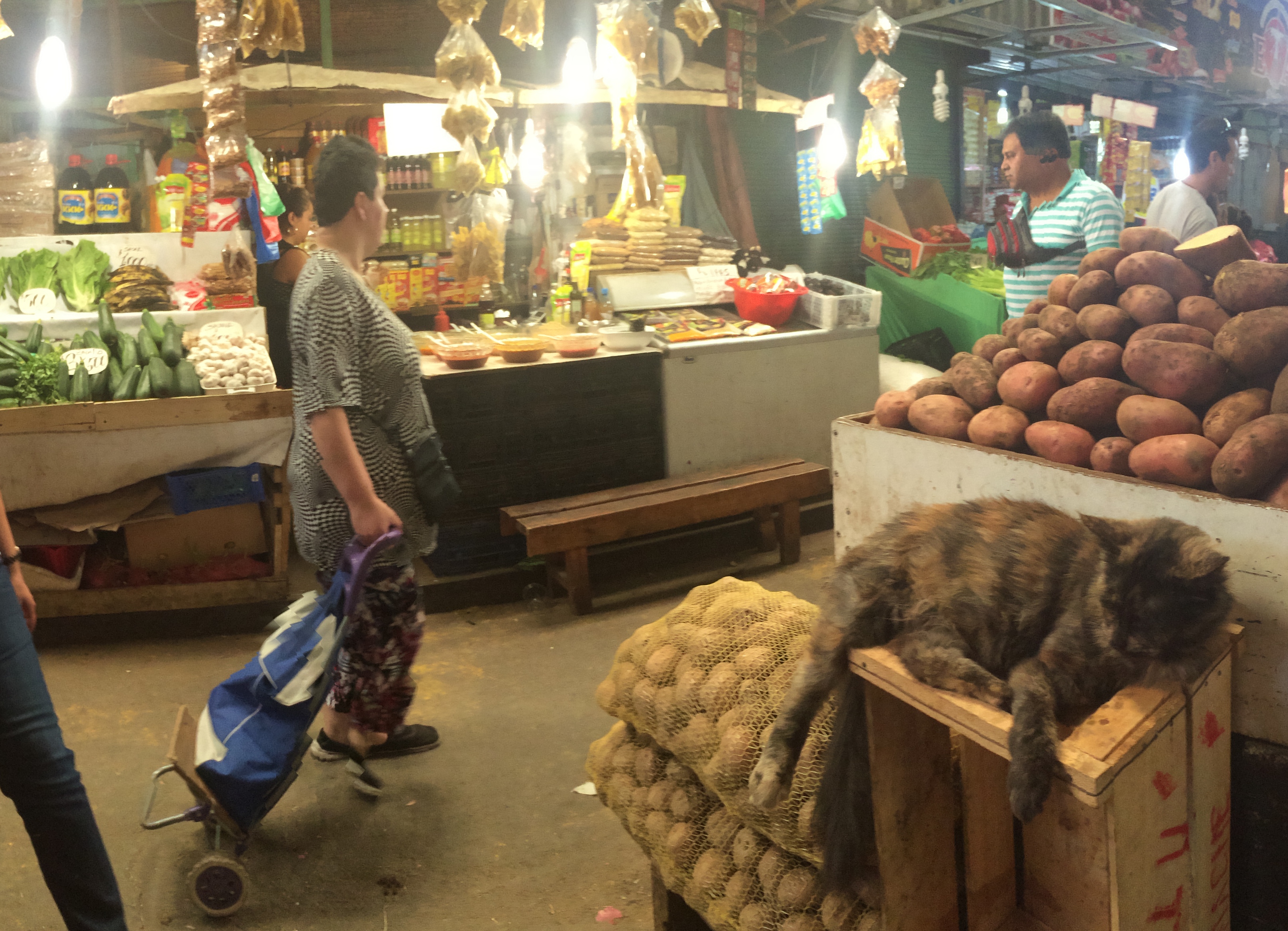
Once we exhausted ourselves from walking all over downtown, we relaxed at Parque Forestal. Like San Francisco, the major metropolitan of Santiago has a handful of parks sprawled throughout the city.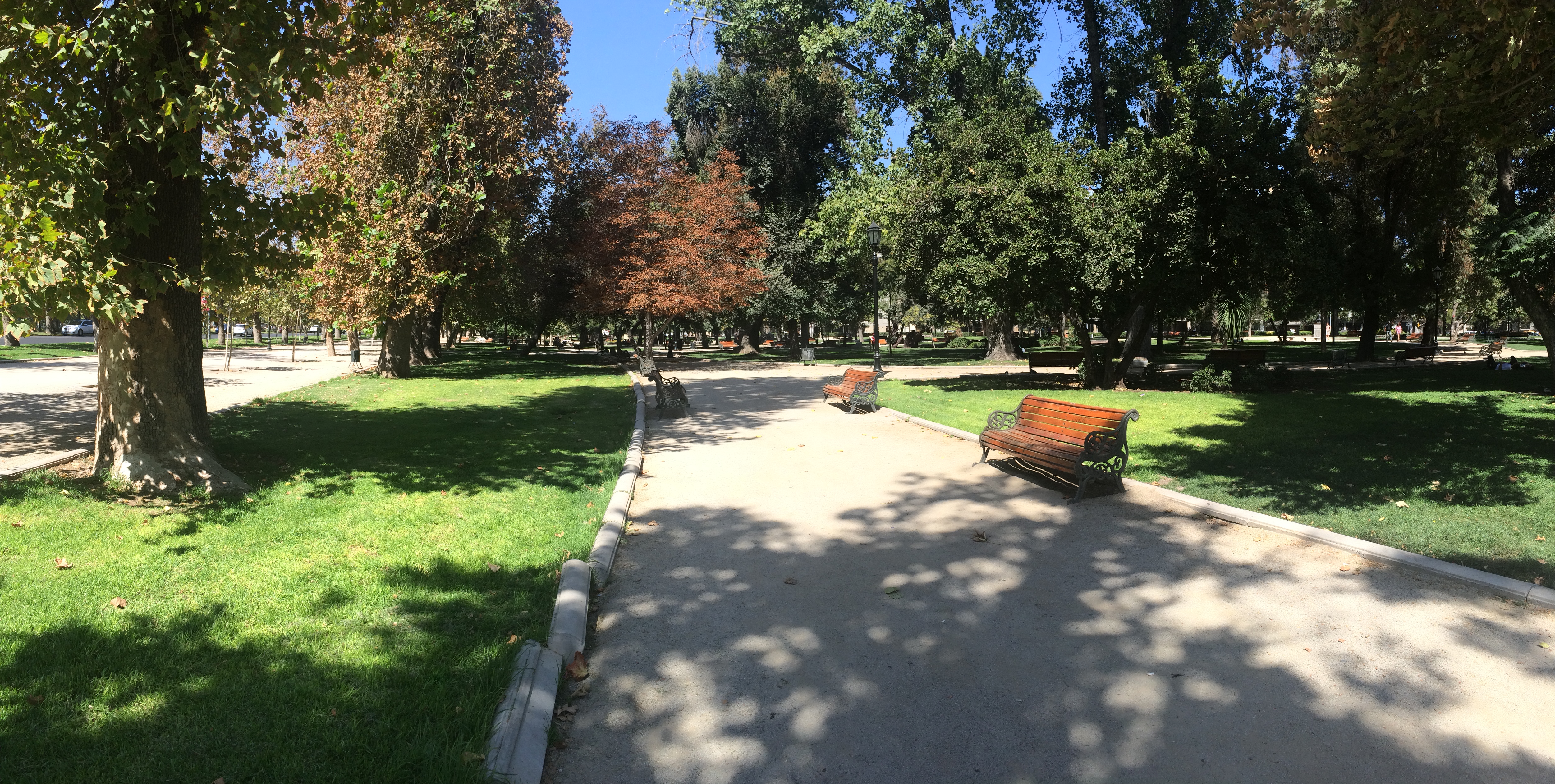
We took it easy the remainder of the day, primarily getting ready for another flight the following day to Punta Arenas, the southernmost city of Chile. We were now going to leave Santiago’s perfect summer weather for the south’s frequent rain, strong winds, and unpredictable cold (cold to Californians with high 50s and low 40s), but the wonders of the Patagonian outdoors awaited us.
It had only been 2 days in South America, 2 days in Chile, and my observation is that it’s not that different from home. Southeast Asia was such a drastic change and I guess I had a similar expectation in South America only because we were traveling internationally again. How is it like home? For starters, no one gives a shit that I’m an English-speaking Asian. I don’t get too many awkward stares. People wear flip flops, short shorts, and mid-drift tops. Young adults aren’t shy to show public displays of affection. Traffic is manageable; drivers and pedestrians obey traffic rules. Drivers don’t abuse their horns. Sidewalks are wide, and people drive large cars. There aren’t any squat toilets, and toilet paper is provided in bathrooms. The weather is pleasant. I haven’t had to bargain yet, and it seems as if everything is a fixed price. And, like in California, Spanish can be heard from anywhere. It really isn’t that foreign. It’s still the west, after all.
In any Southeast Asian country, the smart businessman or businesswoman knew that speaking English was the key to their success. From Vietnam to Myanmar, it was actually quite common to converse in English with natives. Hell, even the Hmong tribes in Sapa were more fluent in English than Vietnamese! Chris said he didn’t really have a difficult time at all communicating in Southeast Asia. Even when I spoke Vietnamese to the Vietnamese locals, everyone was just so delighted that I could speak and understand their language. Southeast Asians simply don’t expect foreigners to know their language. On the contrary, Spanish speakers expect you to speak Spanish. If you do happen to speak it, no one is impressed. Spanish is so widely spoken throughout this massive continent that it’s not necessary for businessmen and businesswomen to speak English in order to have a successful business. As a result, almost no one speaks English. Thankfully Chris has an ear for Spanish, and I have a pretty basic Spanish vocabulary due to my 2 months of cramming.
I’ve studied Japanese for 6 years, but the most time I’ve spent in Japan was about 2 months. Vietnamese was my first language, but the most time I’ve spent in Vietnam was also about 2 months. Now, I’ve spent about 2 months studying Spanish, but I’ll be in Spanish-speaking countries for 5 months. We’re both pretty excited to see our Spanish progression from now until the end of this trip. Next stop: Patagonia!

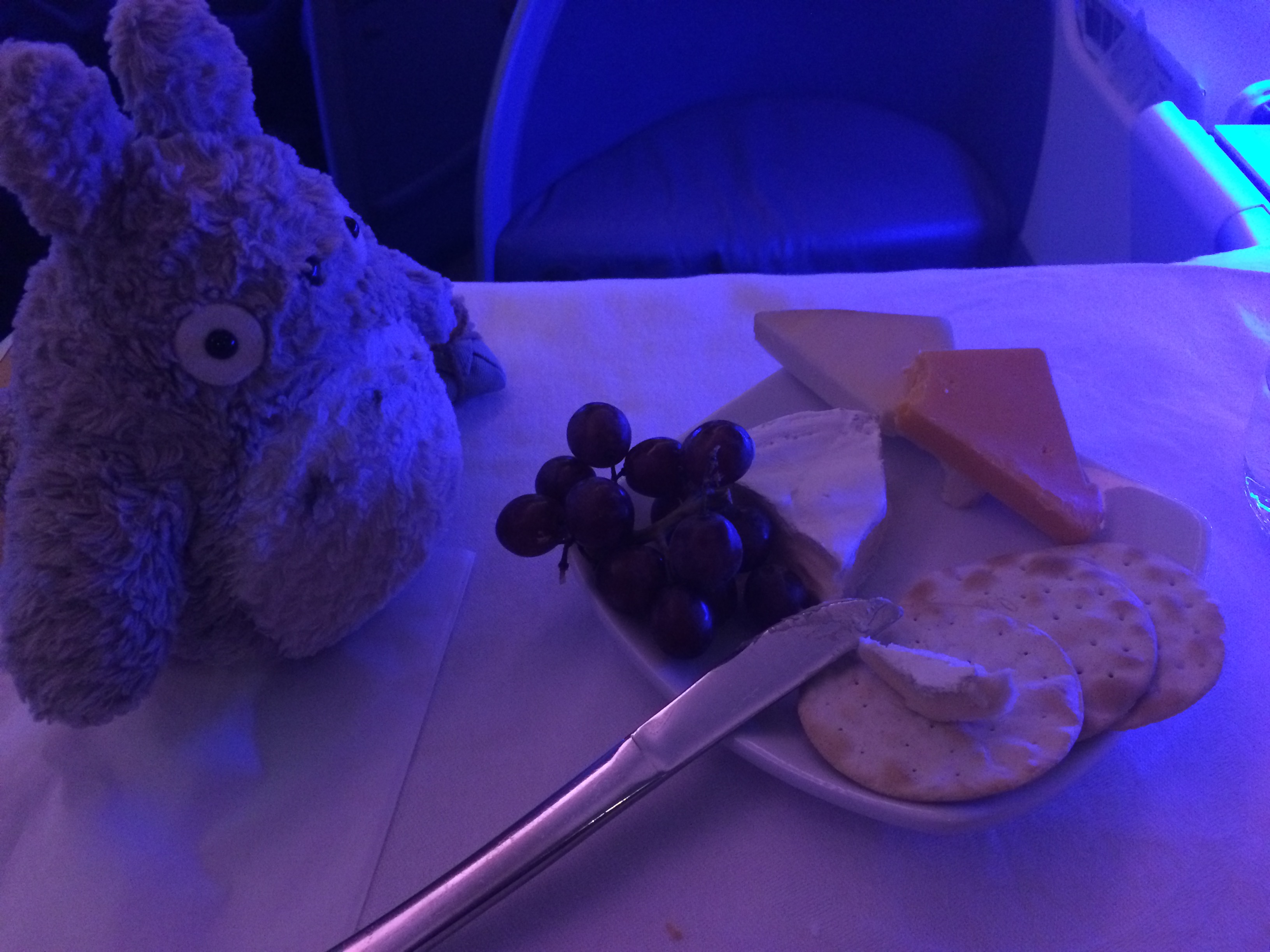
Wow, it will be fun for you to practice your Spanish daily down there for 5 months! No one is impressed except yourself, Jean! hahaha….. Ngoc Diep NguyenNTH-NT
Great writing about Galapagos, Jean!Nuevamente muy interesante! maravilloso viaje! Tu Madre, Ngoc Diep Nguyen